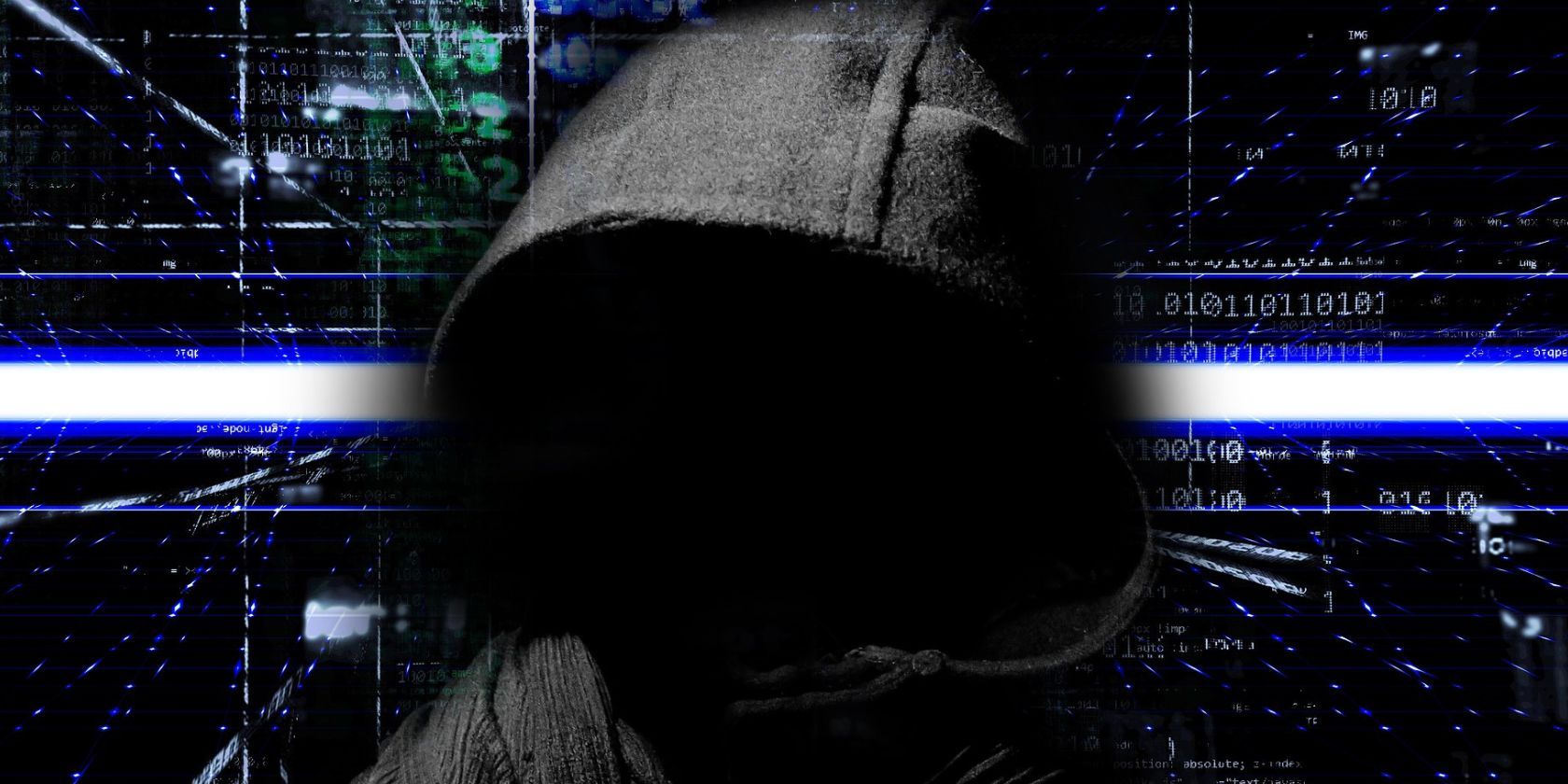Read more of this story at Slashdot.
Ronald.phillips
Shared posts
CBS Explores Whether AI Will Eliminate Jobs -- Especially For Coders
Carlton Was Going To Be 'Cool' On The Fresh Prince Of Bel-Air Until Will Smith Weighed In
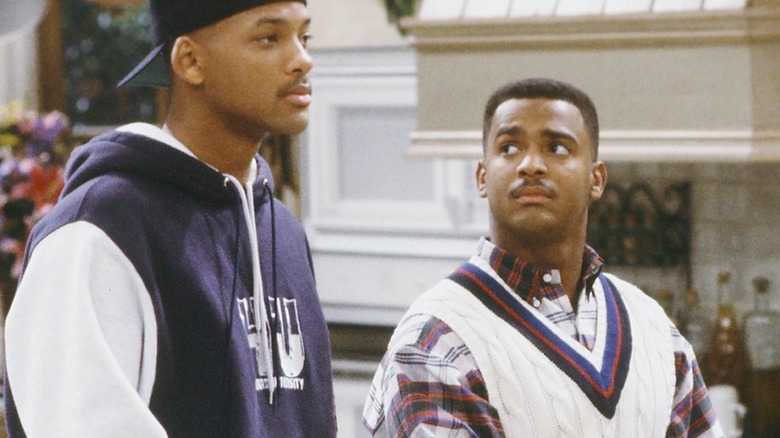
Alfonso Ribeiro has been a pretty ubiquitous part of pop culture for the last four decades, going back to his time as a child actor in the sitcom "Silver Spoons." These days, he's still gracing our living rooms pretty consistently, whether it's as the host of "America's Funniest Videos," or when he won season 19 of "Dancing with the Stars" in 2014 before later becoming a host on that show. It's not a big surprise that he proved himself so adept at dancing. He got his first big break as a kid in a 1986 Pepsi commercial alongside Michael Jackson, after all. And of course, there's The Carlton: the dance he made so famous on "The Fresh Prince of Bel-Air" that he eventually took the makers of "Fortnite" to court when they copied it for a celebration within the game.
He's always had a knack for physical comedy -- something even "Ted Lasso" was only too eager to celebrate -- and allowing himself to look like a huge dork on the screen, which is what made him the perfect foil for Will Smith in "The Fresh Prince of Bel-Air." Whereas Will was a cool, incredibly hip kid from the mean streets of West Philadelphia, Carlton was a stuffed shirt, country club nerd with a Tom Jones fixation. The chemistry between Ribeiro and Smith, and the evolution of the relationship between Will and Carlton over the course of the series, was part of what made it such an enduring classic that's still regarded as one of the best sitcoms of all-time.
Which is why it's simultaneously bizarre and fascinating to think that, at one point, NBC tried to push the show's creators to make Carlton "cool."
It's Not Unusual ... For The Star Of A Show To Put His Foot Down
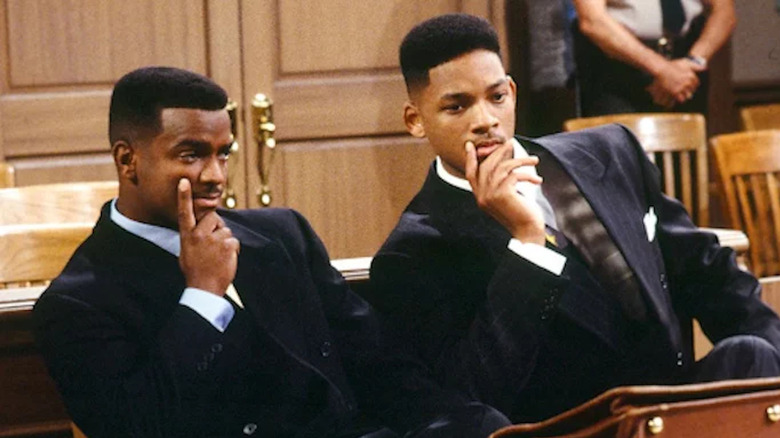
It's hard to fathom how the dynamic between Will and Carlton would have looked, had they opted to follow the network's directive and made Carlton as cool as his cousin Will. There would have been no yin to Will's yang. Show co-creator Susan Borowitz talked to TIME for the show's 25th anniversary in 2015, noting that no one other than the executives at NBC wanted it to happen, either. According to Borowitz, it was Will Smith who eventually convinced the network to let Carlton be a dork:
"The network also would listen to Will. NBC wanted us to make Carlton [Alfonso Ribeiro] cool, and we said, 'No, he's a great foil,' and won on that because Will weighed in and said, 'Absolutely not, this is what makes the comedy.'"
That wasn't the only time Smith used his creative weight for decisions that influenced the lasting appeal of the series, either. When the network wanted to cast the late, great Ron Glass -- who at the time was best known for "Barney Miller" but these days is perhaps most famous for playing Shepherd Book in "Firefly" -- as Geoffrey, the family's butler, Smith more or less demanded they go in a different direction. While Glass was a known commodity, Joseph Marcell was an unknown in the U.S. According to Borowitz, Smith told NBC he liked "the British guy with the big nose." And that was that.
Fortunately for us, Smith was able to help shape the show into an all-time great not just with his charisma on the screen, but also his pull with NBC behind the scenes. Ultimately, when it comes to comedy, "Fresh Prince" helped prove that sometimes, network executives just don't understand.
Read this next: The 15 Best Comedy Duos Of All Time
The post Carlton Was Going To Be 'Cool' On The Fresh Prince Of Bel-Air Until Will Smith Weighed In appeared first on /Film.
Ask Slashdot: Where Can You Buy a Desktop PC That Makes Linux Easy to Install?
Read more of this story at Slashdot.
Ari Aster Purposely Tipped His Hat To Don't Look Now With Hereditary
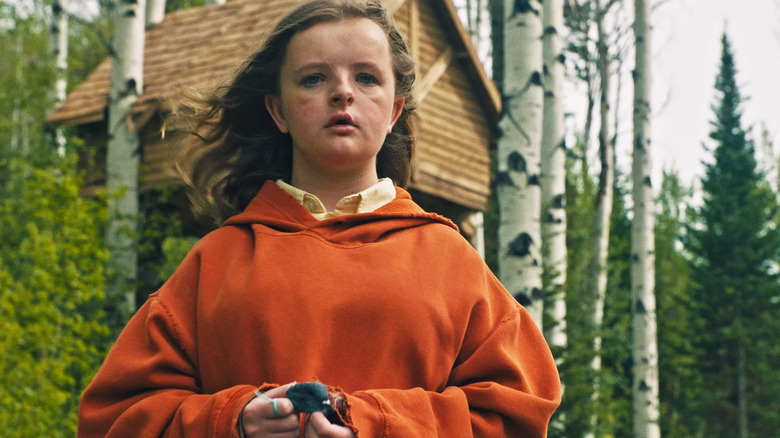
This post contains spoilers for "Don't Look Now" and "Hereditary."
"Don't Look Now" and "Hereditary" are films that stay with you long after viewing. Both feature vivid depictions of the ongoing effects of grief, but director Ari Aster makes a hard turn partway through his 2018 feature debut, veering into supernatural territory as the Graham family discover they've been targeted by the demon Paimon and his cult of followers. In "Don't Look Now," on the other hand, the occult elements, though undoubtedly there, are less overt. Director Nicolas Roeg told The Guardian in 2006:
"Grief can separate people. I've seen it happen. Even the closest, healthiest relationship can come undone through grief. People split up. Or there is a distancing. They can't help it. The fact is that grief doesn't comfort grief. It's just one of those hard facts."
As such, the director allows grief to dictate the horror throughout "Don't Look Now," arguably making the emotional state itself the villain. With "Hereditary," Aster takes a similar tack, depicting the agonizing experience of losing family members, only to then introduce a literal antagonist in the form of Paimon.
But while the two films differ in their handling of their emotional subject, there are many more similarities between them. Aster previously revealed he'd discovered Roeg's films "at an impressionable age" and "been fascinated/terrified/energized by their bottomless mysteries ever since." In fact, he's confirmed that "Don't Look Now" is the film he was "referencing most" with "Hereditary." But not only was he generally inspired by Roeg's masterful Giallo film, he also included an unmistakable visual nod.
Saluting The Master
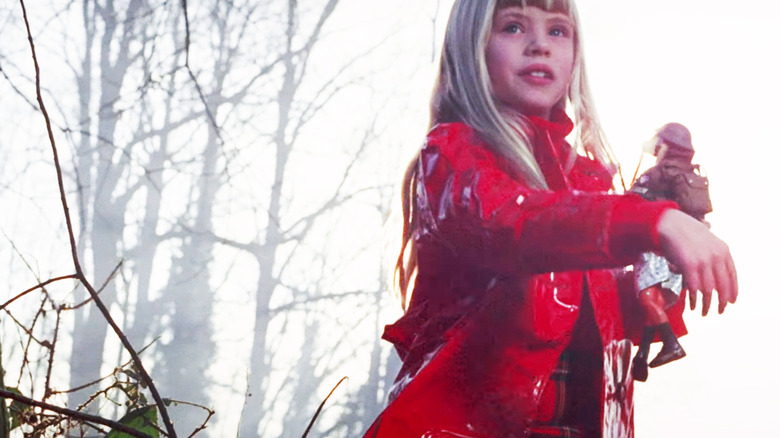
"Don't Look Now" immediately hits you with the death of John (Donald Sutherland) and Laura Baxter's (Julie Christie) daughter, Christine (Sharon Williams) by drowning. Before she falls into the pond on the grounds of the couple's English country home, she's shown running through the foliage, only to wind up beneath the surface after trying to retrieve her ball from the water.
With "Hereditary," Ari Aster paid homage to Nicolas Roeg's haunting prologue by having the daughter of the Graham family, Charlie (Milly Shapiro), wander the backyard of her home wearing a hoodie similar in color to Christine's coat. Charlie is shown walking through the greenery in a scene filled with Roeg-esque shots, including a zoom out from the bird's head in Charlie's hands, hinting at her coming decapitation. That dark foreshadowing and focusing on significant objects is very reminiscent of the "Don't Look Now" director, who used things like the smashing of glass to portend something sinister.
In Aster's scene, there's also an overhead shot that gives an unusual perspective on Charlie's wandering, which is vaguely reminiscent of a shot from the opening of "Don't Look Now." Before Christine falls in the pond, she's shown running along the bank but only her reflection is in frame, so she appears to be running upside down in a grim foreshadowing of her fall into the water. In "Hereditary," we're shown Charlie from a top-down shot that has a similarly eerie effect, focusing on just the girl's head, which will of course soon be lying by the side of the road in what is perhaps the most unsettling scene in "Hereditary." It all adds up to Aster trying to recreate the atmosphere he so admires in "Don't Look Now," which he once characterized as "a warm, uncanny hug of doom."
Rewarding Patience
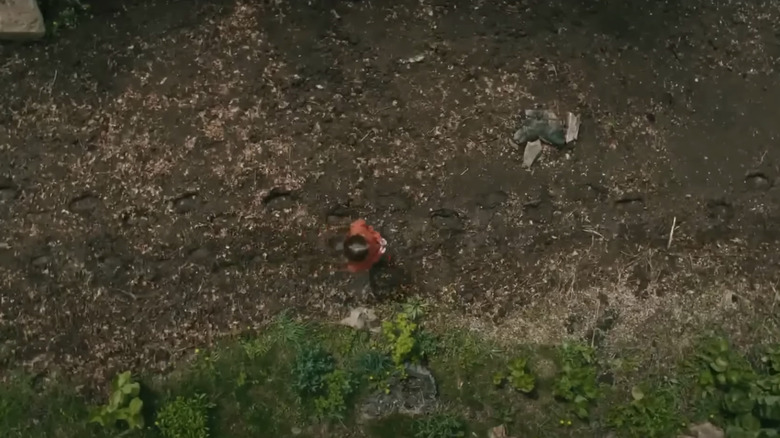
Ari Aster was well aware of what he was doing with scenes like this. But he wasn't just trying to directly lift sequences and shots. His subtle homage to Nicolas Roeg was part of an overall philosophy when making "Hereditary" that emphasized a kind of delicate approach to crafting the terror and the rewards that come with patience. As he told NowToronto.com in 2018:
"I wanted to make a film that demanded a certain amount of patience from the audience, but one that intended to pay that off. The challenge for the audience is to sit tight, and the challenge for me is to make sure that they're satisfied at the end."
The film is paced slowly, beginning with a slow pan that sets up the dollhouse metaphor of "Hereditary" and ramping up the tension gradually over the next 126 minutes, until it becomes a full-blown nightmare. And throughout the movie, there are tons of hidden details that, like the "Don't Look Now"-inspired scene, reward close attention. Anyone who hadn't seen Roeg's film would never know Aster was tipping his hat to the director in that particular scene. And anyone who isn't paying close enough attention wouldn't see the various omens and symbols scattered throughout Aster's bleak vision, or the hidden figures lurking in the Graham house. It's these small details and the willingness to pace the horror over the course of the film that make "Hereditary" one of the best horror movies of all time. Nicolas Roeg would be proud.
Read this next: The 31 Scariest Movie Scenes Ever
The post Ari Aster Purposely Tipped His Hat To Don't Look Now With Hereditary appeared first on /Film.
Christina Ricci Didn't Expect Yellowjackets' First Season To Be Such A Hit
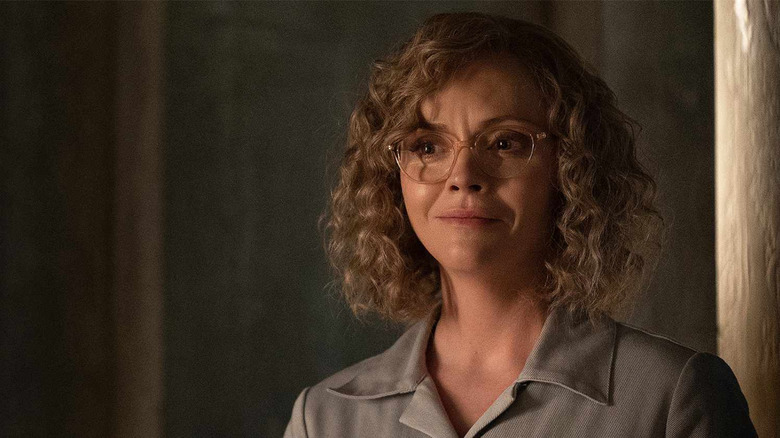
When "Yellowjackets" first premiered, it seemed poised to become another casualty of the post-streaming television landscape. We're talking about shows that debut to little fanfare because of the sheer number of other shows now airing concurrently via streaming platforms. However, the show slowly but surely developed a strong following through social media word of mouth. I know I've certainly convinced many people to watch the show by posting about its various twists and turns on Twitter. By the time its season finale rolled around, "Yellowjackets" became the next television hit, and it has already been renewed for two more seasons.
It's fair to say that the success of "Yellowjackets" was pretty damn unexpected to fans. However, according to Christina Ricci, its popularity was especially unexpected to those working on the show.
"We all thought the show was really good," she said in an interview with Inverse. "We kept saying, 'I think it's really good, guys.' But I don't think any of us thought that in its first season, it would be as big a hit as it is."
Proof That Audiences Still Want Weekly Programming
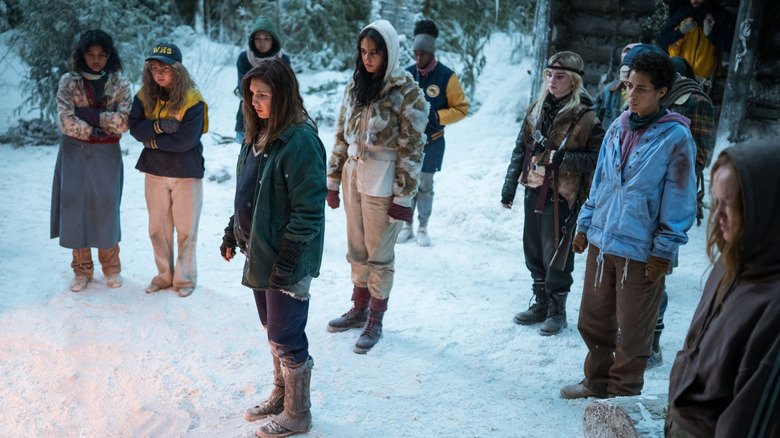
Ricci added:
"I thought the show would build more gradually. I don't know enough about TV to be able to really analyze it, but I don't think any of us expected it to be such a huge hit first season."
There are a lot of factors as to why "Yellowjackets" ended up being as successful as it is. Its central story is extremely compelling – who wouldn't want to watch something about cannibal cults and teenage angst? It also had a strong cast of both veteran actors and exciting newcomers, and most critically, it wasn't released all at one time.
This is an important thing to understanding what made "Yellowjackets" so appealing. The way that the show is structured makes binging it a significantly less enjoyable experience than watching it over the course of a few weeks. The show unravels its various mysteries in a way that makes the viewers want to sit and really think about each reveal they throw your way. That's ultimately a storytelling art that's been lost in the binge-centric television climate, one that arguably values quantity over quality.
However, it's an art that the "Yellowjackets" writing team has proven is still extremely valuable. Audiences want to be kept on their toes and to discuss the latest twists, turns, and shocking moments of their favorite television programs with each other. They want that communal activity of sitting in front of their TVs on a specific day and time to watch something. These experiences simply can't be replicated in the current streaming market, and that combined with the genuine craft exhibited in "Yellowjackets" makes its runaway success make total sense.
"Yellowjackets" returns to airwaves via Showtime on March 26.
Read this next: The Best TV Episodes Of 2022, Ranked
The post Christina Ricci Didn't Expect Yellowjackets' First Season To Be Such A Hit appeared first on /Film.
AMD Talks RDNA 4, GPU-Based AI Accelerators, Next-Gen Graphics Pipeline: Promises To Evolve To RDNA 4 With Even Higher Performance In Near Future
![]()
AMD senior execs including head of Radeon Technologies Group, David Wang, recently sat down with 4Gamer to talk about their future GPU strategy including the RDNA 4 graphics architecture.
AMD Promises To Evolve To RDNA 4 GPUs With Even Higher Performance In The Near Future
AMD's RDNA 3 graphics architecture was introduced and launched to the world in the Q4 of 2022. Since then, the graphics architecture has been featured in desktop, mobile & integrated graphics solutions from the Radeon RX 7900 (Desktop), Radeon RX 7000S/M (Laptop) & Radeon 700M series (iGPUs).

Starting with Mesh Shaders, David Wang states that AMD's current RDDNA 3 GPUs feature MDIA, a Multi-Draw Indirect Accelerator that is capable to process MDI on a hardware level. This allows the company to extract up to 2.3x the performance versus RDNA 2 GPUs. It's been proposed as a true replacement for the classic LoD (Level of Detail). AMD wants to see even more advanced shaders & techniques to be installed within their RDNA 4 GPUs as a part of its new GPU programming model.
"We would like to propose this as a new standard specification for the GPU programming model," Wang said. Will this be installed as a new feature in the RDNA 4th generation GPU? It looks very interesting.
AMD SVP of Radeon Technologies Group, David Wang (Machine Translated via 4Gamer)
Moving to the AI side of things, David Wang talks about how the use of AI within Radeon-class GPUs for gamers. It is made clear that AI processing is mostly done on CPUs & they can do it fast enough. In fact, 95% of inference processing is said to be done on CPUs and AMD knows this since they are one of the leaders within the server CPU industry. Meanwhile, the AI Learning & training model is something that's done primarily on the GPU side and Wang states that their recent commitment to the ROCm software suite is now on par with NVIDIA's CUDA platform.

As for the performance of the inferencing accelerator on the Radeon RX 7900 "RDNA 3" GPUs, he states that installing an AI accelerator on the GPU is more of a business decision on what users want and what they don't want. AMD doesn't want to limit the AI accelerator to just upscaling features such as FSR, XeSS, and DLSS. Do note that AMD already has the 3rd generation of FSR known as FSR 3 in the works.
They see an opportunity in a host of other applications but don't want users to be paying extra for features they don't want. Wang states that FSR competes well with NVIDIA's DLSS without AI-based acceleration. He gives full credit to NVIDIA's AI strategy but doesn't think that strategy applies to AMD GPUs (yet).
According to AMD, some other uses of AI accelerators within GPUs could be NPC Behavior and Movement with the learning model being applied to make those better and more fluid than the standard AI programming model from the developers. The AI accelerator can be harnessed by developers to make their gaming experience for users even better.

The AI can also be used for image processing which is something that's picking up the pace within AI generational tools. Wang mentioned that Stable Diffusion for GPUs was implemented within the Vulkan ML API around the same time the Radeon RX 7900 "RDNA 3" series were announced. Looks like the green team (NVIDIA) has been taking full advantage of their AI prowess to power AI generation tools and AMD also wants a piece of that cake.
We think that what should be done with the inference accelerator installed in the GPU should not be limited to "utilization centered on image processing" represented by NVIDIA's "DLSS". Take a look at FidelityFX SuperResolution (FSR), one of the FidelityFX series. FSR's anti-aliasing and super-resolution processing realized without using an inference accelerator provide performance and quality that can fully compete with NVIDIA's DLSS.
The reason why NVIDIA is actively trying to use AI technology even for applications that can be done without using AI technology is that NVIDIA has installed a large-scale inference accelerator in the GPU. In order to make effective use of it, it seems that they are working on a theme that needs to mobilize many inference accelerators. That's their GPU strategy, which is great, but I don't think we should have the same strategy. We are focused on including the specs that users want and need to give them enjoyment in consumer GPUs. Otherwise, users are paying for features they never use. We believe that inference accelerators that should be implemented in gamers' GPUs should be used to make games more advanced and fun.
For example, the movement and behavior of enemy characters and NPCs are probably the most obvious examples.
Also, even if AI is used for image processing, AI should be in charge of more advanced processing. Specifically, a theme such as "neural graphics", which is currently gaining momentum in the 3D graphics industry, may be appropriate.
AMD SVP of Radeon Technologies Group, David Wang (Machine Translated via 4Gamer)
On a closing note, Rick Bergman, AMD's EVP of Computing & Graphics Business Group) shared the GPU strategy and promised to evolve to the RDNA 4 generation of GPUs with higher performance than what we got with RDNA 3. What's even more interesting is that the word "Near Future" was used which would suggest that the next-gen might be coming sooner but we still expect to see those in 2024 as the red team has various RDNA 3 launches planned throughout 2023.

Rick also states that they are currently making GPUs for a wide variety of platforms including mobiles, consoles, and automobiles, and that they will continue to develop GPUs that will not betray the expectations of gamers.
Currently, GPUs for PCs are steadily evolving from RDNA 1 to RDNA 2 and RDNA 3, and we promise to evolve to RDNA 4 with even higher performance in the near future.
In recent years, Samsung Electronics' SoC "Exynos 2200" has entered the smartphone field by providing RDNA 2-based GPU IP cores. In addition, AMD's GPUs have been provided to electric vehicle maker Tesla for its "Model S" and "Model X" in-vehicle systems. It is a foray into new fields. We will continue to develop GPUs that will not betray the expectations of gamers.
It's definitely great to hear from company representatives in such interviews and we can't wait to see what AMD's RTG has in the stores for us in the coming years. The next-gen AMD Radeon GPU lineup based on the RDNA 4 architecture is expected to launch by 2024 and will be utilizing a new and advanced process node.
AMD RDNA Generational GPU Lineup
| Radeon Lineup | Radeon RX 5000 | Radeon RX 6000 | Radeon RX 7000 | Radeon RX 8000 |
|---|---|---|---|---|
| GPU Architecture | RDNA 1 | RDNA 2 | RDNA 3 / RDNA 2 | RDNA 4 |
| Process Node | 7nm | 7nm | 5nm/6nm | 5nm/3nm? |
| GPU Family | Navi 1X | Navi 2X | Navi 3X | Navi 4X |
| Flagship GPU | N/A | Navi 21 (5120 SPs) | Navi 31 (6144 SPs) | Navi 41 |
| High-End GPU | Navi 10 (2560 SPs) | Navi 22 (2560 SPs) | Navi 32 (4096 SPs) | Navi 42 |
| Mid-Tier GPU | Navi 12 (2560 SPs) | Navi 23 (2048 SPs) | Navi 33 (2048 SPs) | Navi 43 |
| Entry-Tier GPU | Navi 14 (1536 SPs) | Navi 24 (1024 SPs) | Navi 34 (1024 SPs)? | Navi 44 |
The post AMD Talks RDNA 4, GPU-Based AI Accelerators, Next-Gen Graphics Pipeline: Promises To Evolve To RDNA 4 With Even Higher Performance In Near Future by Hassan Mujtaba appeared first on Wccftech.
Ant-Man 3's Evangeline Lilly Declined Hugh Jackman's Offer To Join The X-Men
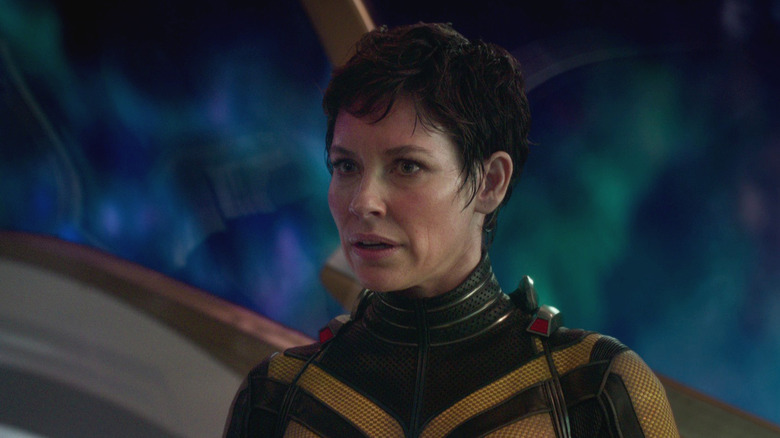
Somewhere out there in the multiverse of every possible Marvel movie ever, Evangeline Lilly is flying around as an X-Woman rather than the Wasp. It could have happened in our world, but even with Hugh Jackman — Wolverine himself — extending Lilly an offer to join the X-Men, she turned it down, according to the actress herself in a new interview.
In the past, Lilly has spoken about how she was uncomfortable being thrust into the spotlight with her first movie or TV speaking role as Kate on ABC's "Lost." In 2018, while promoting "Ant-Man and the Wasp," Lilly told The Hollywood Reporter, "I ended up deciding to retire after I finished 'Lost.' I did a film called 'Real Steel' with Hugh Jackman and then I walked away."
It was only after two years of "having no contact with Hollywood at all" that director Peter Jackson lured Lilly out of retirement to play the Wood-elf Tauriel in "The Hobbit: The Desolation of Smaug." In 2015, Lilly showed up as Hope van Dyne in the first Ant-Man movie, and now her character shares co-billing with Paul Rudd's protagonist in the threequel "Ant-Man and the Wasp: Quantumania."
While making the media rounds in support of "Quantumania," Lilly recently appeared on the Happy Sad Confused podcast (via Entertainment Weekly), where she told host Josh Horowitz about the time she rejected Jackman's X-Men recruitment attempt to his face.
"When we were working on 'Real Steel,'" she began, "Hugh Jackman was like, 'Hey, so, the 'X-Men' guys are asking me if I would approach you because they know that you won't talk to anybody. They knew I was working with you and were interested to know if it would ever interest you to do an 'X-Men' thing."
'I Feel Like Such A Dick Because I'm Talking To An X-Men'
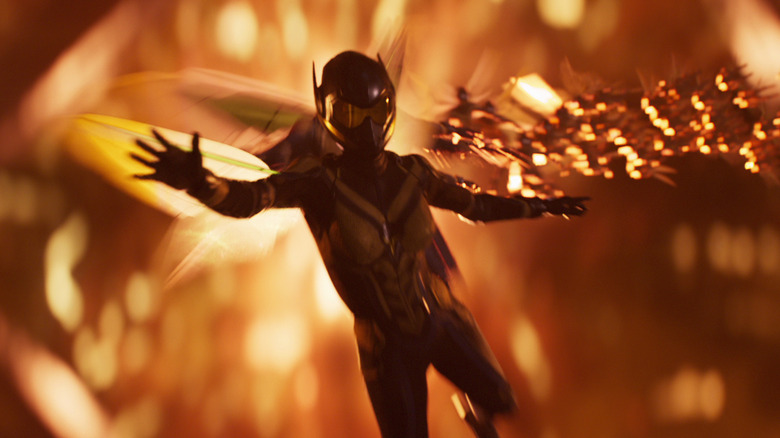
This interaction between Lilly and Jackman on the "Real Steel" set sounds like an awkward comic book scenario where Wolverine is asking the Wasp out on a date. Lilly was blunt in her response to Jackman's offer to join the X-Men:
"I was like, 'No. It doesn't interest me. I'm not interested. I was like, 'I feel like such a dick because I'm talking to an X-Men! The X-Men! And I'm telling him, 'No that doesn't appeal.' Like, what?! I felt so rude!"
Hearing this after seeing "Quantumania," it also sounds like Lilly is channeling a bit of Cassie Lang (Kathryn Newton), who uses the word "dick" to describe one insufferable character in the movie. That character picks up the word and starts using it to self-identify, and based on the Super Bowl trailer for "Guardians of the Galaxy Vol. 3," we'll be hearing even more of the word in the next addition to the Marvel Cinematic Universe, from the lips of Star-Lord (Chris Pratt) to the new Gamora (Zoe Saldana)'s ears.
Back in late 2021, Lilly used different vocabulary to describe Hope van Dyne, calling her "an odd enigma" and saying that the script for "Quantumania" gave her a "eureka moment" where she finally understood her character. I almost wonder if that moment got left on the cutting-room floor, because despite having her superhero name in the title, Hope somewhat takes a backseat to her mother, Janet van Dyne (Michelle Pfeiffer), in "Quantumania."
Lilly has spoken elsewhere about wanting to make an A-Force movie happen at Marvel, so maybe she'll have a chance to fly higher as the Wasp next time. Until then, you can see her in "Ant-Man and the Wasp: Quantumania," in theaters now.
Read this next: MCU Superpowers That Don't Quite Make Sense
The post Ant-Man 3's Evangeline Lilly Declined Hugh Jackman's Offer To Join The X-Men appeared first on /Film.
In case you haven't been paying attention -- and judging by all the balloon and Barney the Dinosaur stories out there, you haven't been -- the death toll from the Turkish earthquake has passed 45,000 with thousands more still missing [Followup]
What Role Does Mathematics Play In Cybersecurity? Check These Examples
For most technologies to be usable, very complex work takes place in the background. Most people use an operating system and don't care why or how it exists. It doesn't seem necessary. In the early years of computing, machine codes and mathematics were much more important. But if you're a cybersecurity professional, math is still important to you. Why? What role does math play in cybersecurity anyway?
Dominion: Prequel To The Exorcist Ending Explained: A Chance To Turn Back Time
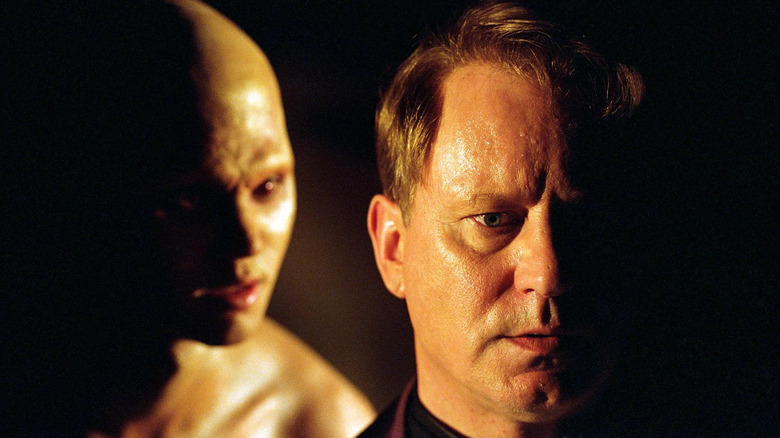
I can think of a few living filmmakers better suited to making an "Exorcist" movie than Paul Schrader. From the existential rage and self-loathing of Travis Bickle in "Taxi Driver," through the spiritual torment of Jesus in "The Last Temptation of Christ," to the doubting pastors of "Affliction" and "First Reformed," Schrader has spent much of his career exploring matters of the soul. As Roger Ebert once noted, "One thing [Schrader's] movies have in common is a very strong, visible sense of sin."
So who better to direct an "Exorcist" prequel after William Peter Blatty's flawed "The Exorcist III" marked a return to form for the series after the loopy metaphysics of John Boorman's "Exorcist II: The Heretic?" Surely if anyone could get to the bottom of Father Merrin's past exploits, it would be Schrader, right?
Problems arose because Schrader was only Morgan Creek's third pick to direct the movie. Tom McLoughlin, the man who brought us "Friday the 13th Part VI: Jason Lives," and veteran John Frankenheimer both pulled out before producer James G. Robinson reached for his number. When shooting wrapped, the final result was a bit too Schrader-y for Robinson's liking (via The New York Times).
Schrader was fired and Renny Harlin was brought in to punch things up a little. He ordered another rewrite, cast new actors, and reshot the whole movie. The Devil himself didn't seem to approve -- see the "Exorcist Curse" -- as Harlin was hit by a car, breaking his leg.
Harlin's "Exorcist: The Beginning" was a disaster, prompting Morgan Creek to meekly release Schrader's original version on a limited run. It didn't fare much better with audiences or critics, but it's fascinating to see two versions of the same film side by side. Let's see how they compare.
So What Happens In Dominion Again?
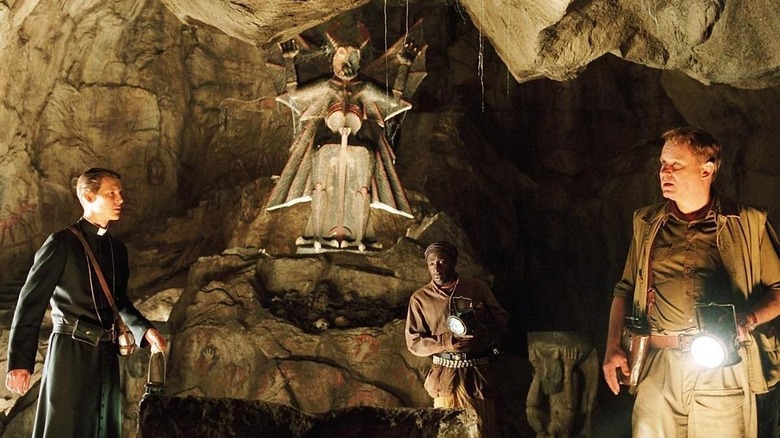
"Dominion: Prequel to the Exorcist" opens in the Netherlands in 1944. A German soldier is killed and an SS officer demands that the perpetrator is handed over. Father Merrin (Stellan Skarsgård) vouches for the innocence of his flock, prompting the SS man to execute 10 villagers as a message to the real murderer. He makes Merrin pick the victims.
The incident destroys Merrin's faith, and three years later, we find him working on an archaeological dig in British East Africa. A 5th-century Byzantine church has been unearthed, constructed before Christianity reached those parts. Father Francis (Gabriel Mann) is sent by the Vatican to make sure that the find isn't desecrated.
While workers from the local Turkana community try to gain access to the church, Merrin spots Cheche (Billy Crawford), a disabled young man who has been cast out because the locals think he is cursed. Merrin takes the lad for treatment to Dr. Rachel Lesno (Clara Bellar), who also suffered at the hands of the Nazis during the war.
Once they get inside the church, Merrin and Francis notice that the statues hold their weapons pointed downwards, suggesting it was built to hold down something bad rather than exalt God. They discover a passageway leading to a cavern with a demon statue a little like the Pazuzu one from "The Exorcist." At the hospital, Cheche grows fearful at the exact moment they gain access to the hidden chamber, which Merrin believes was used for human sacrifices.
Disturbing things start happening. A herd of cows kills the hyenas that stalk the dig and graze on their carcasses, and the chief's wife delivers a stillborn baby crawling with maggots. Village elders warn Merrin to stop digging as they fear the church is the source of evil.
History Threatens To Repeat Itself
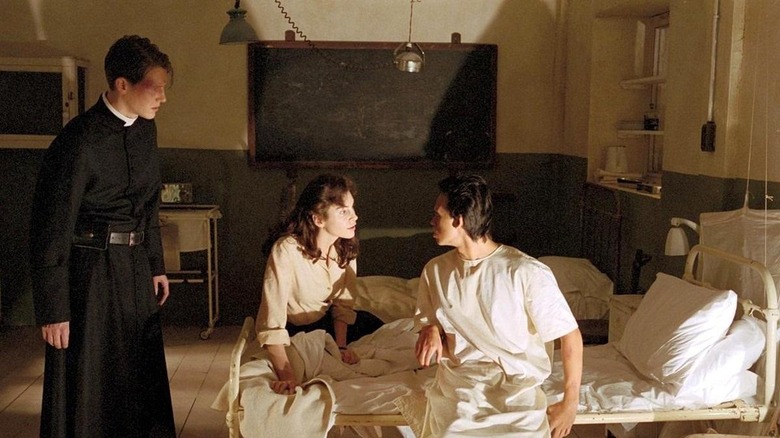
Father Francis wants to notify the Cardinal about the find and bring in British troops to secure the site, but Merrin worries that the church will be looted if word gets out. Despite his protests, Major Granville (Julian Wadham) sends for reinforcements. Merrin's fears prove warranted as two soldiers enter the church to loot precious stones from the altarpiece.
The men are found horribly butchered the next day -- one decapitated and the other crucified upside down. A Turkana warrior claims that he saw them turn on each other. Merrin argues that the symbolism of the poses is Christian, not pagan. This doesn't wash with Granville, who has grown uncharacteristically aggressive towards the locals. Echoing the opening scene in the Netherlands, he shoots a young woman on the spot in retribution for the deaths of his men.
Things escalate as the warrior bursts into the local school and murders the children to stop the "Christian evil" from spreading. Meanwhile, Cheche has undergone surgery on his lame leg, which heals remarkably quickly. His withered arm, which Rachel believed was unrecoverable, also grows strong. Unknown to everyone, he is displaying the characteristics of being possessed. When he awakes from the anesthetic, he says he would like to become a Christian, but only wants to do it in the church.
Alarm bells should be ringing, but Father Francis is all for a baptism to save the young man's soul. The enraged community wants the boy handed over so they can kill him, correctly believing he is possessed. The baptism goes predictably awry as the demon inside Cheche attacks the priest. Realizing an exorcism would be more appropriate, Francis dashes off to find his copy of the Roman Ritual, leaving Rachel alone with her patient.
The Exorcism
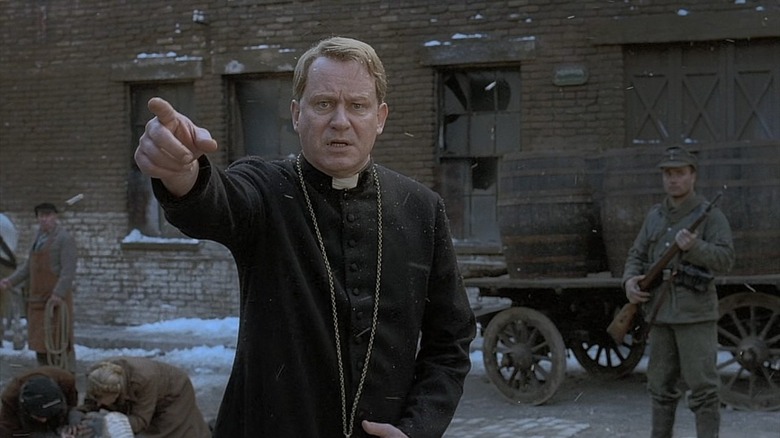
Father Francis is discovered riddled with arrows like Saint Sebastian, continuing the theme of the victims' bodies being arranged in Christian poses. He still has enough life in him to tell Merrin that Cheche is possessed and needs an urgent exorcism.
Merrin goes to the church and finds Rachel under the influence of the demon. She tells him that the fiend offered her the chance to rewrite her past. Merrin briefly confronts the demon, who tells him that Rachel betrayed her friends in the concentration camp. Is it true, or is the Devil up to his old tricks?
He then returns to town and prays to God. In a scene that plays a little like "John Wick" digging up his guns, Merrin busts out some priestly vestments and heads to the church to perform the rite. The demon also offers him an opportunity to change history and clear his crushing guilt. In a vision, Merrin disarms the SS officer and shoots him, prompting the German soldiers to open fire and kill everyone anyway, including the priest. The demon mocks Merrin's guilt and encourages him to "cease to care."
Meanwhile, it's all kicking off back in the town. A spooky aurora, looking like a special effect from "Exorcist II: The Heretic," shimmers in the sky as Rachel prepares to cut her own throat and the Turkana warriors attack the British soldiers.
Thankfully, Merrin recovers his faith just in time and exorcizes the demon, averting multiple deaths and turning Cheche back to his former disabled state. A Turkana elder warns Merrin that he has made an enemy of the demon, nicely setting the table for "The Exorcist." Merrin says a tender goodbye to Rachel and walks away into the sands, ready to become a priest again.
How Does Dominion Compare To Exorcist: The Beginning?
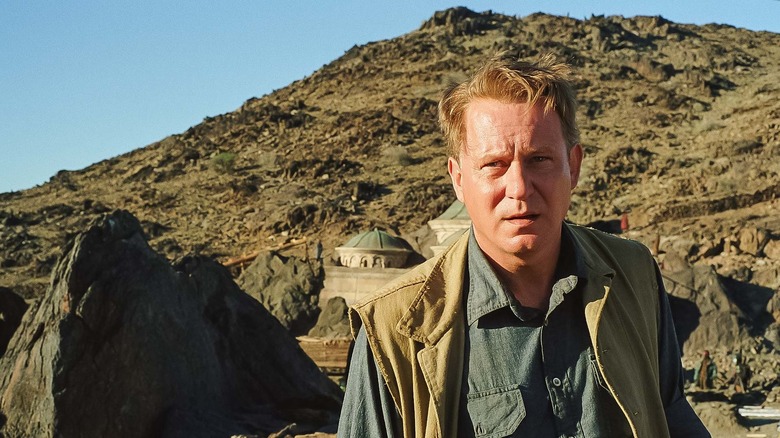
After sitting through Renny Harlin's amped-up rehash, Paul Schrader's original "Exorcist" prequel is a fascinating watch. Both versions broadly hit the same beats, but Schrader's film is a far more somber examination of the evil that lurks in mankind. Without all the gaudy bells and whistles Harlin added, it's a pretty stripped-back affair. There is no flashy back story for the church or hyena attack on little kids; no Alan Ford gnashing his teeth like gangster Bricktop in "Snatch;" no Vatican cover-up for Merrin to unravel or a twist ending; and no unnecessary gore and jump scares. What they do share is some very bad CGI.
There are also no callbacks to the original trilogy. Harlin switched out the demon statue for one that looks exactly like the one in "The Exorcist" and had the plot re-jigged to include the St. Joseph medallion and the Pazuzu statuette head, two important symbols of good and evil in William Friedkin's 1973 film. Those changes felt more like fan service than actually adding much to the story.
Without the title and the name "Merrin," you might not necessarily know Schrader's film was part of the "Exorcist" franchise. Indeed, it is almost as if he had little interest in actually making a horror movie. This is fine because the most interesting scenes in "The Exorcist" are the quiet ones exploring faith, while the head-spinning and pea-soup vomiting feel more like sideshow attractions these days.
Schrader's earnest approach allows the actors to explore their characters in greater detail. Father Francis is a far more sympathetic presence than the 'Father Exposition' he becomes in Harlin's version. Julian Wadham, a survivor of both movies, makes Major Granville a believable study of a man losing his morals and his mind, without the hokey butterfly death scene in the reshoot.
What Difference Did The Changes Make To The Ending?
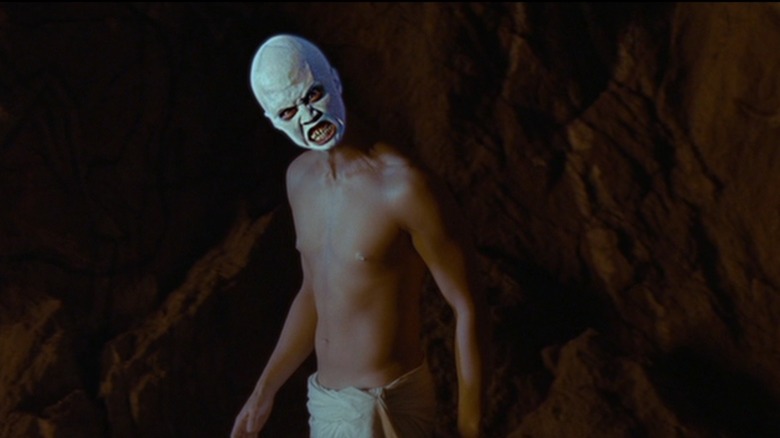
The storyline of both "Exorcist: The Beginning" and "Dominion: Prequel to the Exorcist" are roughly the same: demonic evil lurking beneath a mysterious church in East Africa begins to turn people against one another, and Father Merrin must recover his faith to thwart it. Most of Renny Harlin's distracting add-ons don't steer the film too far from that narrative, but there are two major changes that significantly alter the emphasis of the ending.
Paul Schrader's film treats Merrin's traumatic experience during the war with greater respect. Rather than dishing it out in small chunks as part of a gradual reveal as Harlin does, the incident that broke the priest's faith opens the film in full. This lets the theme of historic evil repeating itself play out organically as tension rises between the British and the Turkana, and also makes the final confrontation between Merrin and the demon more satisfying.
Secondly, Harlin's film switched the possessed person from Cheche (who doesn't appear in the reshot version) to the doctor, renamed Sarah (with former Bond girl Izabella Scorupco recast in the role). Presumably, this was to give the film extra glamor and provide Merrin with a more overt love interest. Harlin also uses her for the twist ending, faking us out by first presenting a young boy from the village as the possessee.
Both these elements feed into the climactic exorcism. Harlin also strips out the key scene of the demon tempting Merrin with a chance to make amends, turning the rite into a straightforward situation where he must beat the bad guy and save the girl. Harlin's ending feels very generic, without any of the philosophical questions that make Schrader's version a solid addition to the "Exorcist" series.
What Does The Ending Of Dominion Mean?
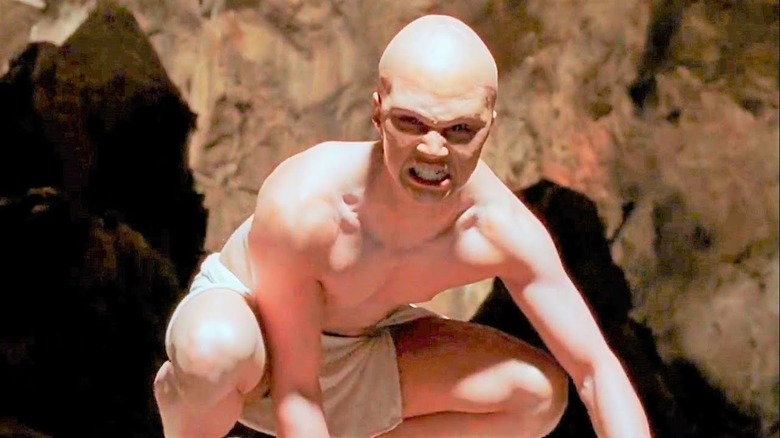
The demon's offer to help Merrin change the past presents some interesting food for thought. Even assuming that the alternative timeline the demon shows him is true, would the knowledge that his actions made no difference to the overall outcome absolve him of guilt? Guilt is part of the Catholic faith, but there are two kinds. Healthy guilt helps people take stock of their lives and make positive changes, while unhealthy guilt leaves them dwelling on events that they cannot change or control.
While the vision he's shown might seem like a bit of a pep talk to help Merrin realize he is wallowing in unhealthy guilt, there is a more devious motive. The demon wants to drive a further wedge between him and God, possibly severing ties forever. If the ploy succeeds, Merrin will no longer present any threat to the Devil's plans.
But Merrin has the resolve to reject the demon's lies and continue with the exorcism -- in the process, he makes an enemy for life. Perhaps that is why elderly Father Merrin (Max von Sydow) is visibly shaken when the Pazuzu statuette head is unearthed at the beginning of the original "The Exorcist." He knows that another confrontation is imminent and he may not survive it this time.
At its core, "Dominion" is similar to "The Exorcist," focusing on a priest suffering a crisis of faith who delivers an innocent from the clutches of the Devil. One of the main differences, as Schrader has pointed out (via Captain Howdy), is that it focuses on an afflicted boy "glorified" rather than a normal girl tormented. And the priest gets to survive this one, setting up the epic confrontation in "The Exorcist."
Read this next: The Saddest Character Deaths In Horror History
The post Dominion: Prequel to the Exorcist Ending Explained: A Chance to Turn Back Time appeared first on /Film.
The Author Of Berserk Thought He Would Be Sued After Seeing Evil Dead II
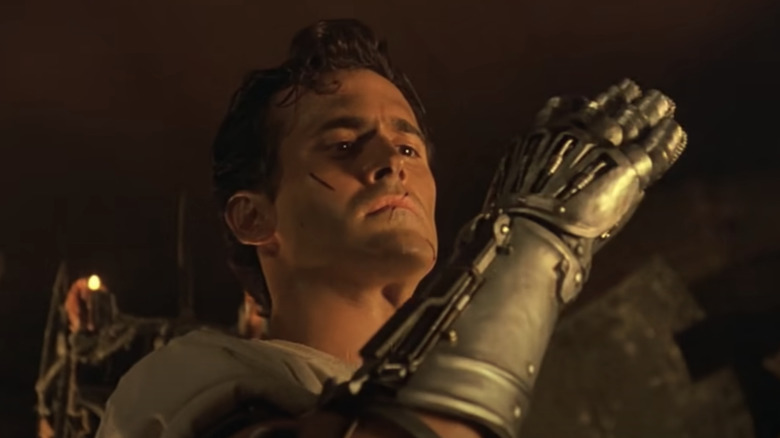
"Army of Darkness" turns 30 this week and enjoys a well-earned reputation as a horror-comedy classic. Indeed, the influence of Sam Raimi's filmmaking stretches beyond the Pacific Ocean. Kentaro Miura, the late, legendary manga artist responsible for "Berserk," named Raimi and Tim Burton as his favorite filmmakers. In an interview (transcribed into English), Miura praised these directors as "offbeat," noting, "it's strange that a person can be that offbeat and big at the same time."
Miura would know; "Berserk" is one of the bleakest, most violent stories you'll ever read. Some of its splash pages are less action spreads and more ethereal tableaus. However, it's often cited as the crown jewel of fantasy manga. He and Raimi were so alike, in fact, that Miura started to get concerns about copyright. He recounted:
"Back then [the late 1980s] I was still in college, it was the day I finished the first episode of 'Berserk,' and there was 'Evil Dead II' playing at theaters. So after I mailed it to the publisher, I went to see it. It was so similar to 'Berserk,' I was really surprised by myself."
What are the similarities between "Evil Dead" and "Berserk?" It has to do with their lead characters, Ash Williams (played by the one-of-a-kind Bruce Campbell) and The Black Swordsman, Guts.
Guts And Ash
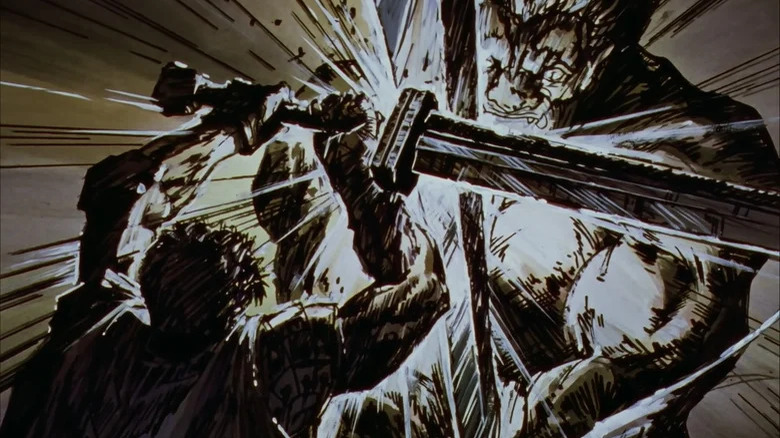
In "Berserk," Guts is a warrior who wanders Midland, a fantasy realm resembling Dark Ages Europe. Guts has only companions: the small fairy Puck, his enormous sword the Dragon Slayer, and hordes of demons on his trail.
On Guts' neck is a brand marking him as a "Sacrifice" for the Apostles, humans who gave themselves over to the force of darkness and were reborn as demons. The Brand of Sacrifice allows Apostles to track Guts, and he in turn can tell when one is near because his brand painfully bleeds. Amoral and bloodthirsty, Guts seeks vengeance on the Apostles' masters, the God Hand, for reasons that are revealed as the story unfolds
Sam Raimi has a thing for cursed protagonists. In the closing narration of "Spider-Man," Peter Parker (Tobey Maguire) calls his powers "[his] gift" in one breath and then "[his] curse" in the next. In "A Simple Plan," the leads' misfortunes all start when they come across a crashed plane full of money and take the cash. Then, the lead of "Drag Me To Hell" is literally cursed and doesn't escape it.
Ash Williams is the original cursed Raimi protagonist. Like Guts in "Berserk," he's trapped in a cycle where he's hounded and tortured by demons. Both Raimi and Miura have a sadistic bent when handling their main character. Granted, Raimi plays Ash's misfortune for comedy, not a tragedy as Miura did with Guts. There are more similarities between Ash and Guts than just fighting demons though; they also look quite alike. Miura, as befitting of an artist, took note of the design overlap.
Missing And Metal Hands
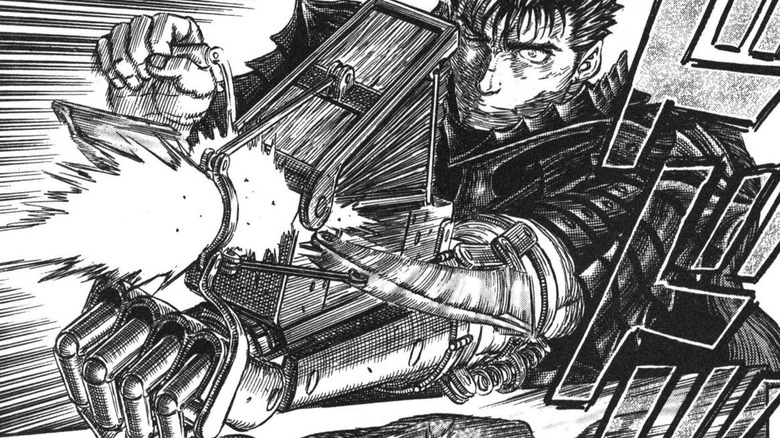
Both Guts and Ash have a missing hand, severed by their other one. In "Evil Dead II," Ash's right hand is possessed by a Deadite and begins attacking him. He's eventually forced to pin it down with a knife and then sever it with a chainsaw. Later, he attaches the chainsaw to his arm as a groovy replacement. In "Berserk," Guts is introduced with a mechanical arm; we learn later his original limb was bitten by an enormous Apostle and he hacked it off to free himself. While Ash wields a "Boomstick" shotgun as a backup weapon, Guts' new arm can turn into a cannon.
Miura described his astonishment at these similarities: "[Ash] had his arm cut off and he had a chainsaw attached to his arm and had a shotgun on his back. I was like, 'What the?' because Guts has a gun on his arm and a huge sword on his back. It was just like Ash." A creator feeling anxious before sending their work out into the world is to be expected. Now, though, Miura also had to worry that he would get sued for copyright before his creation could blossom. It didn't help that the similarities grew in the third "Evil Dead" film, "Army of Darkness," or as it was called in Miura's native Japan, "Captain Supermarket."
Recursive Influences
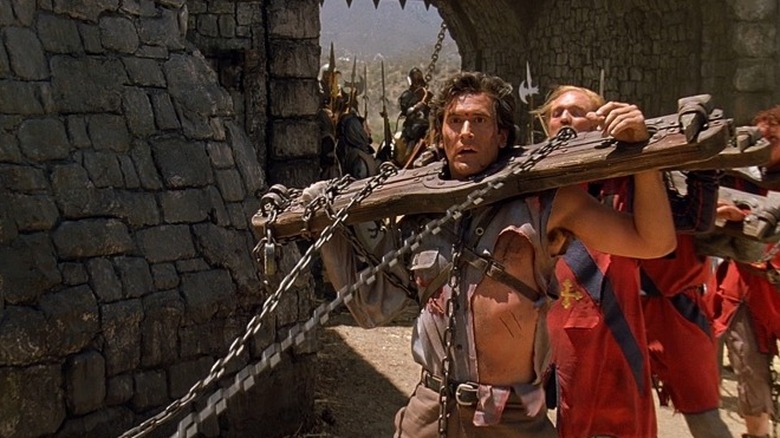
In "Army of Darkness," Ash is sent back to the Middle Ages; instead of a cabin in the woods, he fights demons in castles and black forests, echoing Guts. Ash also ditches his chainsaw for a full-on bionic hand that's fastened to his arm stump with a belt harness, just like Guts. Give Ash in "Army of Darkness" a slab of iron shaped like a sword to carry around and he'd be Guts' spitting image.
Now, it's unlikely Ash directly influenced Guts' character, at least conceptually. Most of the similarities between the two originate in "Evil Dead II" — in the original film, Ash keeps both his hands attached to his body. If anything, I'd say Gut's mechanical arm is probably inspired by Luke Skywalker (in the aforementioned interview, Miura declared, "'Star Wars' is my all-time favorite movie").
That said, one can spot some small nods to "Evil Dead" if they look closely at "Berserk." In one chapter, Guts is captured and held in a pillory; only his intact arm is bound while his prosthetic is removed and the stump lies free. This looks remarkably like Ash's predicament in the opening of "Army of Darkness." In the "Berserk" chapter "He Who Hunts Dragons," we learn how Guts got his artificial arm. In Dark Horse's English translation of this moment, he gives the device a familiar compliment: "Groovy."
Given how similar their sensibilities were, it's not surprising that Miura counted Sam Raimi among his favorite directors.
Read this next: The 15 Best Horror Movie Directors Of All Time
The post The Author of Berserk Thought He Would Be Sued After Seeing Evil Dead II appeared first on /Film.
Akiba Maid War Episode 6 English Dubbed
Blood in a Sisterly Troth and the Menace of the Red Bat
Manami Yamagishi, a legendary Maid known as the “Crimson Supernova”, is released from prison and escorted to the Maidalien group’s HQ. After calling Maidalien’s current leader soft for letting Wuv-Wuv Moonbeam get wiped out, she takes over the group herself. Meanwhile, Nagi and the Debt Collector issue an ultimatum to the Oinky Doink Manager to deal with Maidalien’s leader or they will destroy her cafe themselves. When the Manager calls a staff meeting to inform them of the news, Ranko and Zoya suggest assassinating Maidalien’s leader, as all other alternatives would lead to their deaths. However, Nagomi doesn’t want to fight, fearing that a war would make her have to hurt Nerula. The Manager suggests a formal sisterhood bond, and with the ramen chef’s help, the two become sisters…[tab:WCO Player]
[tab:END]
Newest US Export: Censorship?
It’s a trend that has been on the rise in the U.S. for several years.
In 2022, there were 137 gag order bills introduced in 36 state legislatures that sought to limit what materials could be taught or made available in public schools and libraries. And, like so many American trends, this one has become popular elsewhere in the world.
Gag orders in American education have struck down or attempted to censor materials that dealt with race, gender, sexuality and American history, in K through 12 classrooms as well as in public universities. PEN America, a free speech organization, compiles weekly lists of these bills in its Index of Educational Gag Orders. When such orders are passed, teachers can be fined or face criminal charges if they continue to use the material in question or discuss banned ideas.
Thanks to Florida’s “Parental Rights in Education” law — commonly known as “Don’t Say Gay” — it is prohibited in that state for public school teachers in kindergarten through third-grade classrooms to provide “instruction” on sexual orientation or gender identity.
It seems this prohibition holds appeal for political leaders elsewhere in the world, as such censorship is now surfacing in Australia, Canada and the United Kingdom. What are they trying to ban — and why?
Australia
In Australia in 2021, the senate voted against including critical race theory in the country’s school curriculum. Critical race theory, or CRT, holds that racism is built into western economic and political systems, and therefore is a systemic issue. (In the U.S., CRT has been a target in many attempts to censor educational materials and even entire curricula.) Australia’s move appears to have been an effort to bar students from studying the legacy of colonialism.
Despite the vote in its legislature, Australia’s senate does not actually have the power to determine school curricula. Meanwhile, the Australian Curriculum, Assessment and Reporting Authority — which does have that power — didn’t mention CRT when it drafted its national curriculum.
It seems that the senate’s move was an exercise in political rhetoric, rather than an attempt to change policy. But political rhetoric often precedes policy change, so we’ll be watching how this debate unfolds in Australia.
Canada
In the Durham Catholic District School Board in Ontario, school trustees and parents objected to the terms white supremacy, microaggression and reparation in a proposed anti-racism policy. These words were then removed in an amended version of the policy, as was explicit mention of colonialism.
However, following backlash from the community, the school board issued an apology and said it would be working with the Anti-Black Racism and Black Excellence Advisory Committee to create a forum for further discussion. The initial draft of the anti-racism policy was reinstated.
In another part of Ontario, a motion was raised at a meeting of the Waterloo Region District School Board to request that teachers prepare a presentation defining CRT and white privilege before these terms were used in class. Trustee Cindy Watson, who brought the motion, also requested that educators support white children if they “internalize guilt and shame.” The school board confirmed that CRT is not taught to grade-school-age children in their schools, and voted down the proposal.
United Kingdom
In 2003, the U.K. government abolished its Section 28 law, which had forbidden teachers from “promoting homosexuality.” Today, however, policies that seek to prevent discussion of homosexuality are on the rise. Gay author Simon James Green was banned from visiting a Catholic school in south London, while there has also been an uproar about drag queens reading to children in libraries.
Despite these controversies, education censorship is unlikely to take root in the U.K. in the same way that it has in the U.S., where elected officials control the purse strings on school funding. Such officials can, in essence, hold districts and individual schools to ransom. In the U.K. as well as in Canada, school leaders — not elected officials — determine what to teach in order to meet students’ needs.
Back Stateside …
EveryLibrary is a national political action committee dedicated to libraries, and it supports free access to books of all kinds. According to executive director John Chrastka, “Any parent can decide that a book is inappropriate or appropriate for their child. It is a core role and right of a parent to make that decision. But the relevance of a book to the curriculum and to educational standards is established by professional librarians and educators.”
Explicitly teaching children critical thinking skills protects them from the very indoctrination that campaigners for school censorship seem to fear, says Ken Kunz, president of the International Literacy Association. He says that moves to ban or remove materials from schools only hurt children.
“We are a globally connected community with diverse cultures, experiences, and worldviews,” Kunz says. He adds that, “Being able to respectfully, collaboratively and empathetically participate in such communities requires background knowledge,” as well as an ability to tolerate the discomfort of different ideas or difficult history.
Chrastka notes that the current moves toward censorship are connected to an old and unsavory history.
“Limiting access to information, curtailing exposure to ideas, and diminishing opportunities to discover have never been best practices in education — or in civil society,” Chrastka says. “The political regimes that practice censorship find themselves on the wrong side of history.”
The post Newest US Export: Censorship? appeared first on OZY.
Amazon Defends Decision to Require Employees in the Office 3 Days a Week
Read more of this story at Slashdot.
FTC Launches New Office to Investigate Tech Companies, Seeks Tech Researchers
Read more of this story at Slashdot.
Electric Vehicles Can Now Power Your Home for Three Days
Read more of this story at Slashdot.
Tandy 1000 Gray and Peach Label Releases
RPG Codex - GOTY 2022 Results
Intel ANV Receives A ~24% Performance Boost For Older Hardware With Zink + Sauerbraten
RPG Codex GOTY 2022: Results & Cool Graphs
AMD Publishes Emergent Update After Massive Severity Appears In Ryzen Master Software

The AMD Ryzen Master software is susceptible to hijacking, allowing them to take full control of a user's PC unless you're running the latest update. The AMD Ryzen Master utility enables users to monitor the processor and gain the ability to overclock their system. This new attack, which has a vulnerability rating of 7.2, has been mitigated quickly by the latest update.
AMD Ryzen Master Software was under attack from unvalidated privilege levels during the recent update
AMD's most recent vulnerability was caused by the system "not validating the privilege level of a user during the Ryzen Master installation process." This lack of validation causes the attacker to change the files, change their privilege from a low to an administrative level, and then execute the attack remotely. This attack can be utilized by an older version of the Ryzen Master software utility to initiate the attack. AMD has yet to comment if users without a high access level, such as administrators, could potentially enable the same attack.
Paul Alcorn of Tomshardware also notes that "the new vulnerability is assigned the CVE-2022-27677 identifier and was released in a coordinated vulnerability disclosure with Conor McNamara."

Additionally, the company has not revealed if the attack could allow the attacker access to voltage alterations and real-time clock speeds. Hertzbleed and Plundervolt, two well-known system attacks over the last decade, if not longer, allowed for attacks on the power voltage and speed of the processor. It is unknown if this vulnerability shares the same effects.
Previous Ryzen Master software attacks have happened that has since been mitigated. One such attack was discovered by Hewlett Packard (HP) in 2020, and recent vulnerabilities totaling thirty-one attacks were found over the last month.
The new version, 2.10.1.2287 of AMD Ryzen Master software, is available for download and is recommended for anyone who has yet to update their system with the latest software. Included in the update is support for users to manage the operating temperature of the CPU, which in turn would slow the processor down so that it could maintain proper operating temperatures. The software allows users to increase the voltage setting above 5.2V for educated and experienced overclockers. This feature is only available on select models, as not all processors are created for overclocking purposes.
The post AMD Publishes Emergent Update After Massive Severity Appears In Ryzen Master Software by Jason R. Wilson appeared first on Wccftech.
The Most Brutal Scenes From Winnie-The-Pooh: Blood And Honey
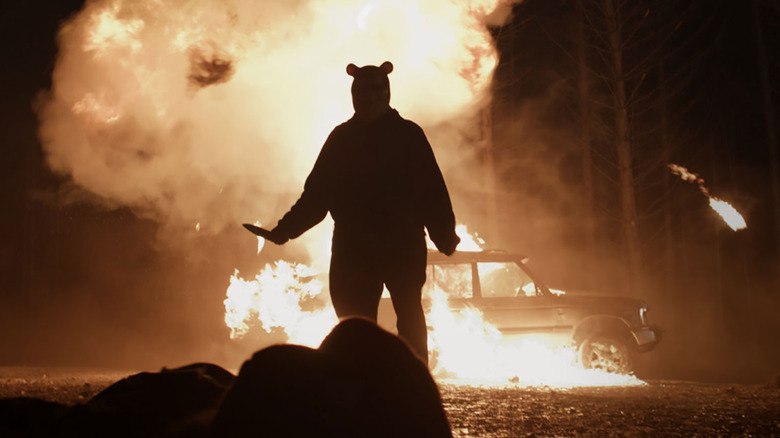
This post contains spoilers for "Winnie-the-Pooh: Blood and Honey."
"Winnie-the-Pooh slasher film" is quite the eyebrow-raising elevator pitch. And yet, upon hearing that short phrase, the listener instantly knows what to expect: gore that subverts the pre-established notion of Pooh Bear as a cute, family-friendly character in a way that aims to be visceral and perhaps comedic. So goes the moviegoing experience of "Winnie-the-Pooh: Blood and Honey," a real film that actually exists.
"Blood and Honey" is extreme. It's probably not a stretch to say it's one of the most graphic, gory films you've ever seen. Think "Kill Bill" level intensity here. Interestingly, the movie doesn't always lean into its inherently humorous concept. Yes, seeing the likes of Pooh and Piglet presented as horror villains is funny, but once the initial shock wears off, the characters' acts of violence hold nothing back in terms of gruesomeness. These moments are dark enough to feel more like legitimate horror scenes (or, at least, attempts at legitimate horror scenes) rather than like they belong in a parody movie.
Suffice it to say, though, putting any energy into articulating critical thought toward a movie called "Winnie-the-Pooh: Blood and Honey" feels like a complete oversight of the point of the film to begin with. This is everything its elevator pitch entails, and it certainly aims for the shock value. Here are some of the film's most brutal moments.
Piglet Chokes Christopher Robin's Wife To Death
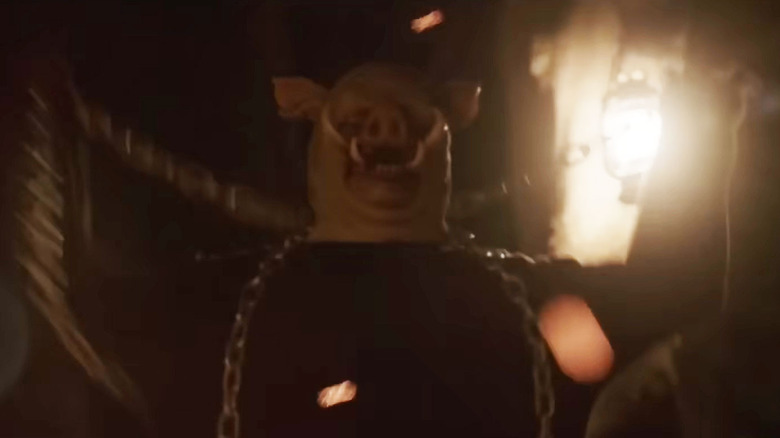
These scenes practically write themselves. In the opening moments of "Winnie-the-Pooh: Blood and Honey," director Rhys Frake-Waterfield sets the tone for the film by immediately communicating this is not the Pooh Bear from your childhood. Christopher Robin (Nikolai Leon), now an adult, returns to the Hundred Acre Wood with his wife, Mary (Paula Coiz). Excited to introduce his beloved animal friends to the love of his life, Christopher Robin discovers his longtime pals have traded hugs for hunting.
Pooh (Craig David Dowsett) and Piglet (Chris Cordell) never forgave Christopher Robin for abandoning them all those years ago. The iconic characters appear in the film as full-body performers wearing grotesque masks that resemble a perturbing cross between their respective animal counterparts and their familiar cartoon designs. Pooh grunts menacingly. Piglet has tusks. It's unsettling, to say the least, but that's all part of the thesis here. Just before the camera cuts to the opening credits, Piglet chokes Mary to death with chains. It's not particularly graphic, but it communicates its intended message: Welcome to "Blood and Honey." You're in for a wild ride.
Pooh Slits A Woman's Throat
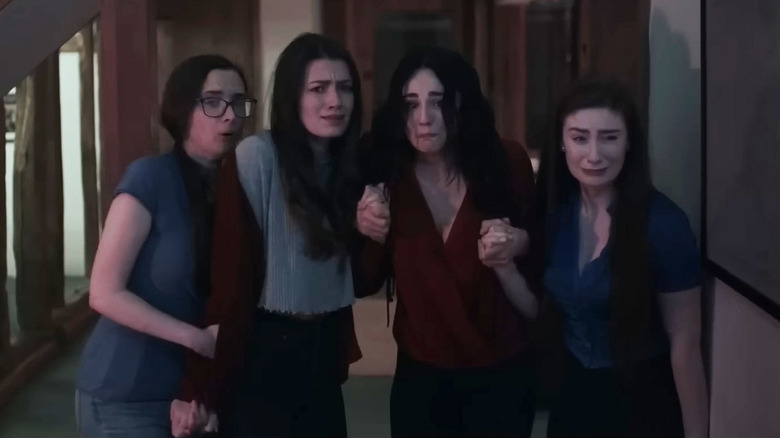
By the time the film reaches its end, a simple slit of a throat is far from the most disturbing sight the audience has seen. Nonetheless, the idea of everyone's favorite "silly old bear" murdering someone is the type of heebie-jeebies that "Blood and Honey" thrives on. In the final moments of the movie, Christopher Robin and Maria (Maria Taylor) are the only characters still alive after Pooh and Piglet's murder spree.
Earlier in the movie, Maria embarks on a stress-free trip with her friends to get her mind off of the recent trauma of being assaulted. This topic in and of itself comes across as way too dark for this kind of movie and leaves many moments in an indecipherable limbo. The basic concept of the film (Pooh and Piglet as psychopaths) invites laughter, but when it throws in themes that are serious and don't play for laughs, the audience is left in the middle of a mess of a movie that can't decide what genre it wants to be. Again, though, entertaining such analysis seems to miss the point. In the end, Pooh kills everyone on the girls' trip, Maria last. Just before the end credits roll, Pooh murders Maria with a swift slice of his knife to her throat.
Windshield Wipers Spew The Remains Of A Woman's Severed Head
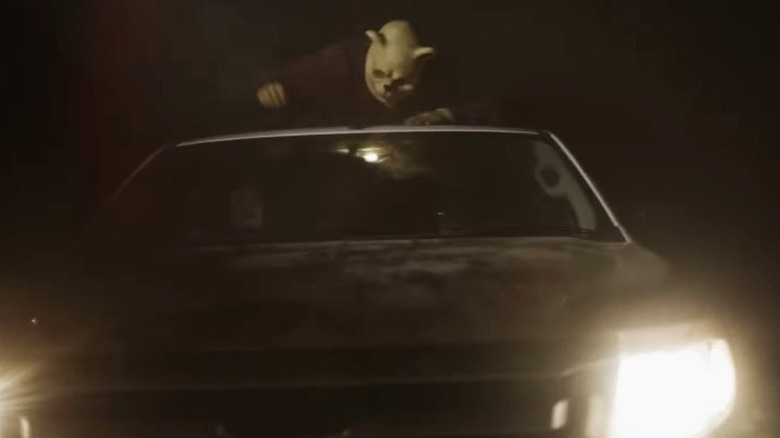
For all its nonsensical stuff and fluff, one must give credit where credit is due. As an independent, low-budget film, "Winnie-the-Pooh: Blood and Honey" occasionally attempts to prove itself stylistically alongside your favorite big-budget horror spectaculars. One such moment is toward the end of the film when Maria tries to escape Pooh's wrath by driving away in a truck. Pooh has just murdered Jess (Natasha Rose Mills), a friend of Maria's who went on the girls' trip.
Pooh throws Jess' severed head onto Maria's windshield, and in a panic, Maria activates the windshield wipers. This woefully makes the situation much worse, spewing Jess' blood and brains from the inside of her head all over the windshield. It's a truly macabre visual that stands out as an inventive shot that would have felt at home in a horror movie not revolving around Pooh and Piglet as serial killers.
Pooh Eats A Woman He Killed And The Camera Holds Nothing Back
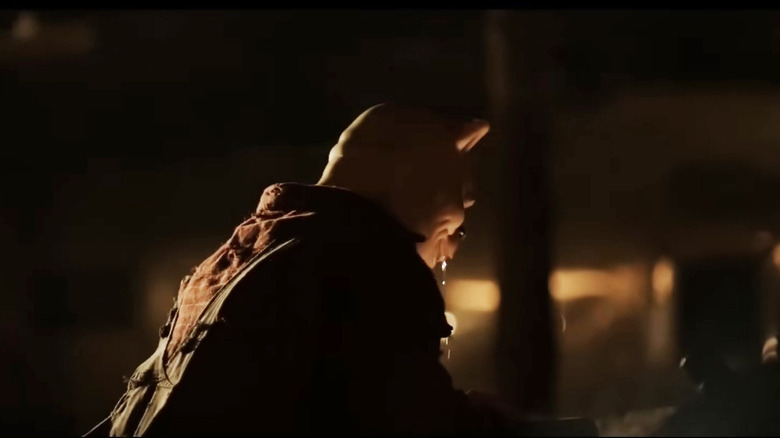
As the film progresses, the audience learns that Pooh doesn't just dispose of the bodies after he kills people; that's where the movie's title comes into play. "Blood and Honey" isn't merely a catchy name. It's Pooh's preferred combination of condiments. After killing his victims, Pooh makes a feast of their remains, but not before dripping honey all over the dead bodies.
In a particularly gross moment, Pooh eats the remains of one of his victims and the camera lingers on the bear enjoying his dinner. In extreme close-up shots, Pooh's face fills the entire screen, his signature combo of blood and honey smeared across his face and dripping from his mouth as he chows down on handfuls of flesh. The sound effects of Pooh slurping his "food" make the scene even more disturbing. Anyone with a gag reflex might want to cover their eyes and ears ... and everyone else will want to wipe their memory clean.
Pooh Throws A Woman Into A Woodchipper
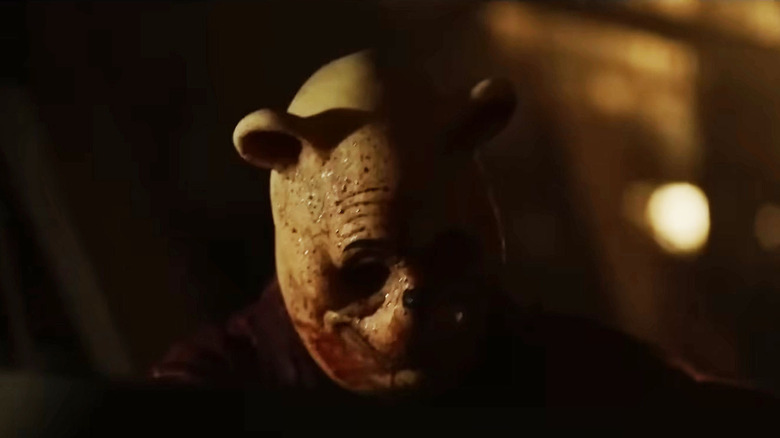
Pooh Bear never seems to kill anyone the same way twice. He goes full "Fargo" when he throws Tina (May Kelly) into a woodchipper. Tina doesn't go down without a fight, kicking and screaming as Pooh unceremoniously hoists her into the machine. Rather than skipping ahead to the inevitable aftermath, filmmakers keep the audience in the moment with Pooh as the woodchipper does its thing. This technique works double-time by the audience bracing themselves for impact, perhaps knowing what comes next — and then having to actually sit through the unspeakable scene they predicted.
Pooh stands forebodingly above the machine while it destroys Tina's body, with the audience looking directly up at Pooh from ground level. The horrific sounds of the woodchipper in the background accentuate the visual of blood occasionally spattering onto Pooh's face. He's unphased by the mess, continuing to just watch it all go down as his face gets bloodier by the second.
Piglet Beheads A Woman With A Sledgehammer
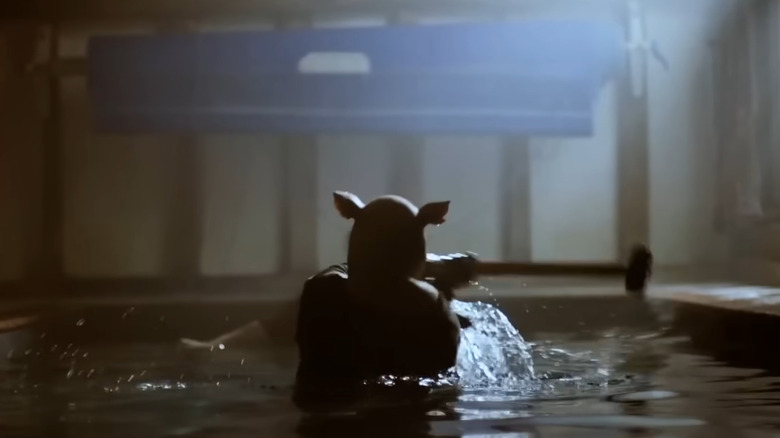
Piglet's weapon of choice is a sledgehammer. (Totally normal sentence, by the way.) He carries it menacingly as he confronts Alice (Amber Doig-Thorne) and Zoe (Danielle Ronald) at the rental house's indoor pool. When Zoe falls into the pool, Piglet dives right behind her, his sledgehammer at the ready. Much like the shark in "Jaws," Piglet swims toward his prey and goes in for the kill.
The camera remains stationary behind Piglet, with his head in the center of the frame as he swims further away from the audience's point of view. Once Piglet reaches Zoe, with a swing of his sledgehammer the hog sends the girl's head careening across the pool, the rest of her body sinking to the bottom. The shot is admittedly a bit cinematic, at least given the context of the film. This definitely isn't the timid, meek Piglet you remember from preschool. Squealing with delight upon every kill, this violent Piglet isn't afraid of anything.
Pooh Slices Off A Man's Face
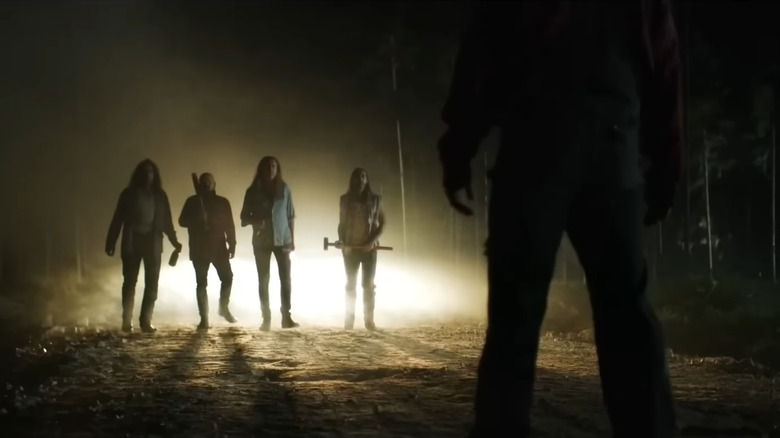
As "Blood and Honey" continues course, Pooh reveals himself to be a bear of versatile talents rather than "a bear of very little brain," as his saying goes from the old animated films. One skill he doesn't utilize until the end of the movie is his apparent ability to karate chop things in a violent manner using only his bare hands. He demonstrates this by slicing off half of a man's face. You read that correctly. With a swift chop, Pooh swipes his hand across the side of a man's face, completely removing the flesh and exposing the tissue within.
The unlucky man is one of four guys who attempt to help Maria and Jess by fighting back against Pooh's tirade. The men never stood a chance. Pooh mutilates each of them single-handedly in a number of different ways. He steps on one of their heads, smushing the skull. He also sends a swarm of bees after another dude. Classic Pooh, right?
Pooh Whips Christopher Robin With Eeyore's Tail
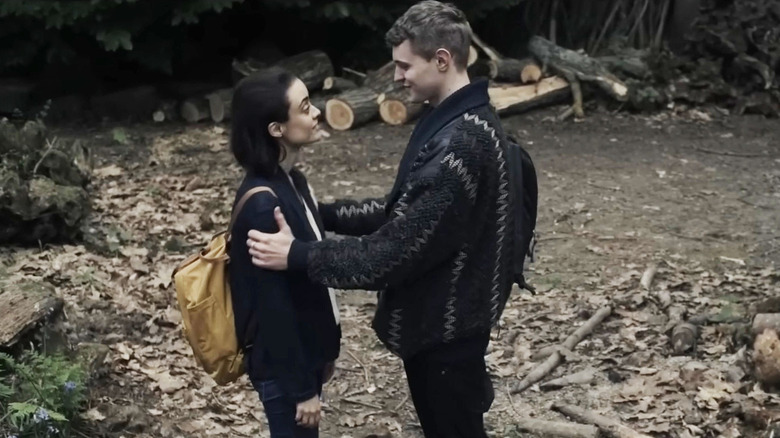
During the prologue, Pooh and Piglet kill Eeyore. While startling, it's not exactly brutal for the purposes of this list because it's animated with rough hand-drawn sketches. The audience never sees anything particularly nasty from the moment. Later on, though, Eeyore's tail serves a much more disturbing purpose for one of the most horrific scenes in the whole movie.
After killing Christopher Robin's wife, Pooh and Piglet keep Christopher Robin as their prisoner, hanging him by his hands shirtless in their treehouse. A skeleton sits in the corner, implied to be all that's left of poor Mary. Not only have Pooh and Piglet eaten her, but they've also recycled her blood and funneled it through a shower head that they spray onto Christopher Robin. Covered in his own dead wife's blood, Christopher Robin screams in anguish. But that's not all. Picking up a long tail of hair hanging on the wall — recognizable as once belonging to Eeyore — Pooh whips Christopher Robin's back. With each lash, Christopher Robin shrieks. When it's all over, he's left with unsettling scars across his entire back. It's a legitimately disturbing scene.
Pooh Wedges A Knife Through A Girl's Mouth
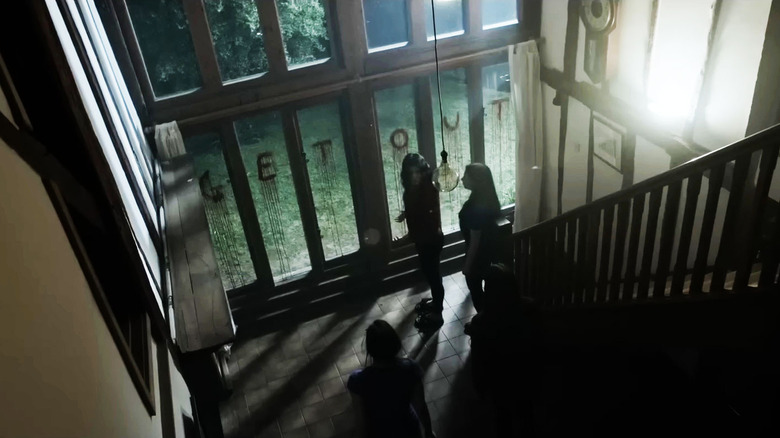
Just when you think you've seen it all, "Blood and Honey" finds new ways to provoke the audience to wonder aloud, "What am I watching?" Pooh and Piglet kill off the girls one by one, each in a manner seemingly more brutal than the last. Toward the end of the movie, Alice is next on the chopping block. She's just murdered Piglet — no easy feat. Upon discovering his dead accomplice, Pooh takes his knife and stabs Alice.
As awful as that would be in real life, you've no doubt seen plenty of stabbings in movies, correct? A knife through the heart is terrifying, sure, but it's hardly the gnarliest item on this list, so why is it ranked so close to the top? Well, this isn't exactly a knife through the heart. It's a knife through the mouth. Yes, Pooh lurches his knife directly into Alice's mouth, the blade piercing through the back of her head. Try to scrub that clean from your memory bank.
Pooh Drives Over A Woman's Skull
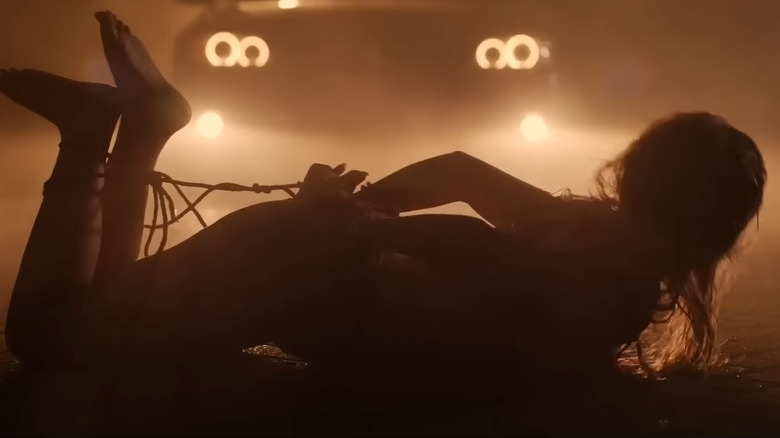
You know the feeling: that moment in a horror movie when the action on the screen is so viscerally scary that the audience squirms, gasps, and maybe even screams. Rather than being undesirable, though, this sensation is partly why you came to the movies. That experience with the audience elevates the film to something more than just images on a screen.
If one were to boil down the appeal of "Winnie-the-Pooh: Blood and Honey" to the aforementioned shared, oxymoronic feeling of horrified delight in a theater, and furthermore select one moment from the film to embody that feeling more than anything else, it has to be the murder of Lara (Natasha Tosini). Piglet ties Lara's hands behind her back and ropes her to the driveway. Behind the wheel of a car, Pooh smiles with deranged glee as he slowly drives the car toward Lara. The camera focuses on a close-up of Lara's face wedged against the cement driveway, the wheels inching closer to her.
Just when the audience thinks the camera will surely break away and not show the impending doom, the shot remains firmly in place. In a moment straight out of a nightmare, the tire crushes Lara's skull. Her brain and accompanying guts spill out of her open head and her eyes pop from their sockets. The audience is in hysterics, some laughing and others shouting curse words. Is this not what you came for? Are you not entertained?
Read this next: Horror Movies You Don't Want To Miss In 2023
The post The Most Brutal Scenes From Winnie-the-Pooh: Blood And Honey appeared first on /Film.
Liam Neeson Says Star Wars Is Losing The 'Mystery And The Magic'
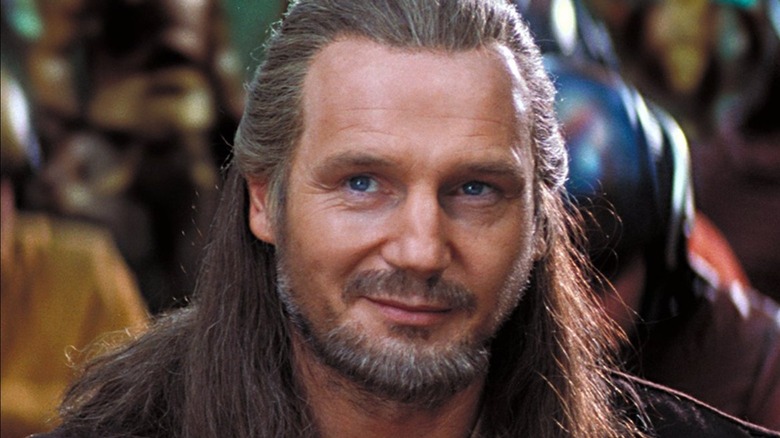
"Star Wars" is now a massive multi-billion dollar concern with 11 films, four live-action television shows (with more on the way), at least four in-canon animated series, and two theme park areas, so it's easy to forget that this entire universe began with a man trying to make an independently funded homage to space opera serials. Although the bevy of "Star Wars" material out there today may be a dream come true for long-time fans, some might say that the lack of additional spin-offs made the older films' releases a special event. Liam Neeson, who played Qui-Gon Jinn in "Star Wars: Episode I -- The Phantom Menace," is one of those who thinks that the franchise just doesn't feel that magical anymore.
To be fair, it's difficult to keep up with "Star Wars" now. In order to get the full story, audiences have to not only be familiar with the nine main movies (now dubbed the "Skywalker Saga"), but also the two spin-offs "Solo" and "Rogue One." Characters who originally appeared in animated shows like "The Clone Wars" and "Rebels" pop up in live-action projects, meaning those who chose to skip the cartoons have to make a quick Internet search when Ahsoka Tano or Bo-Katan show their faces. "The Book of Boba Fett" is a continuation of a story that started in "The Mandalorian," and the main character's arc in "Andor" concludes in "Rogue One." And whereas all of these new "Star Wars" entries came out in less than a decade, it took George Lucas more than 15 years to release "The Phantom Menace" after "Return of the Jedi."
Qui-Gon's Quibbles
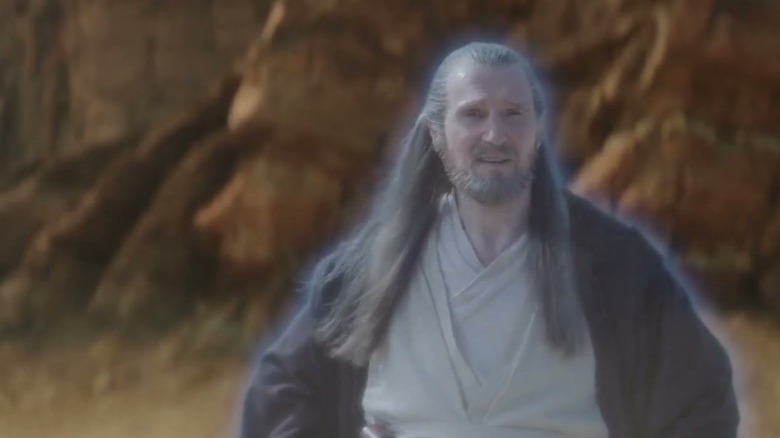
Characters from past "Star Wars" iterations also tend to return to the franchise, even if they need the help of some facial CGI. Neeson is no exception, as he made a brief cameo in the "Obi-Wan Kenobi" series. The actor has said, however, that he's not very interested in making another return to a galaxy far, far away. Speaking on Andy Cohen's "Watch What Happens Live!" with Paul Rudd, Neeson said that the overabundance of spin-offs is "diluting" "Star Wars" for him, and that "it's taken away the mystery and the magic in a weird way."
It's not that Neeson isn't a "Star Wars" fan. He's also said on the show that he's "proud to have been a part of it," referring to the critically panned "The Phantom Menace." In addition, he also explained to The Hollywood Reporter last year that he returned as Qui-Gon because he "didn't want anyone else playing" the character, and that he wanted to pay "respect for George [Lucas] and that mythical world that he created."
It's not that Neeson is a grouch, either. He clearly has a reverence for the franchise. It's just that his fandom is rooted in the pre-Disney days of Lucas' "Star Wars," a sentiment that may ring true for those who feel fatigued from the content overload of the streaming era. While there have always been novelizations, comic books, and video games that have expanded on the world of "Star Wars" since Lucasfilm was its own entity, they were supplementary material that didn't hinder understanding events in the films. Now that "Star Wars" has truly become what feels like an entire galaxy (far, far away), it's easy to get lost in its vastness of content.
Read this next: Every Star Wars Project Currently In Development
The post Liam Neeson Says Star Wars is Losing the 'Mystery and the Magic' appeared first on /Film.
Look Back at 'Loki': Kang's Origins Explained Before 'Ant-Man and the Wasp: Quantumania' - CNET
GoDaddy Says Hackers Stole Source Code, Installed Malware in Multi-Year Breach
Read more of this story at Slashdot.
Army Of Darkness And Last Action Hero Put The '80s Action Hero To Rest
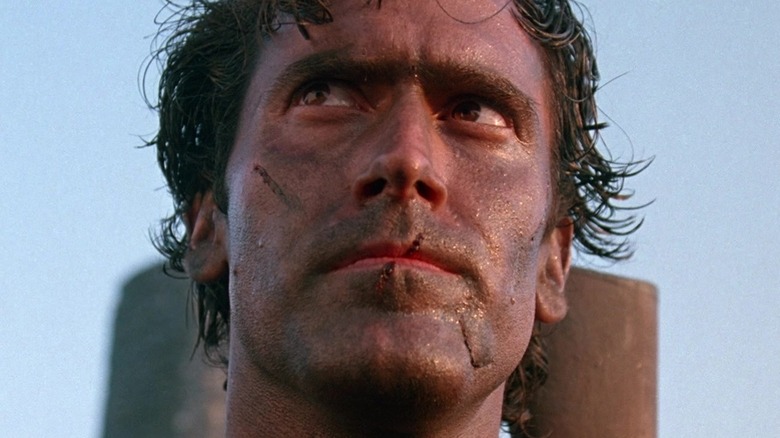
It's a natural occurrence in art that trends, fads, subgenres, and the like must run their course. That doesn't necessarily mean they go away forever, just that their heyday is contained to a finite period of time.
Some trends are so of a moment, however, that even if their genre never goes away, the aesthetics particular to their peak can't come back completely. That's especially true of the 1980s action hero, a figure that only could have emerged during that decade of excess and one that had to say farewell once the more introspective 1990s rolled around.
As with most trends, it's debatable where to objectively define their start — and endpoints. A usually reliable bellwether is when a trend or genre is parodied or satirized. If the parody is external, it may signal the end (as 1980's "Airplane!" did regarding the disaster movie) or simply the genre's popularity (as with 2001's "Not Another Teen Movie").
If the satire comes from within the genre itself, however, it likely means that the trend has run its course. For the '80s action hero, two movies released in 1993 put a metaphorical lid on the larger-than-life, one-liner spouting macho man: "Army of Darkness" and "Last Action Hero."
The Birth Of The '80s Action Hero
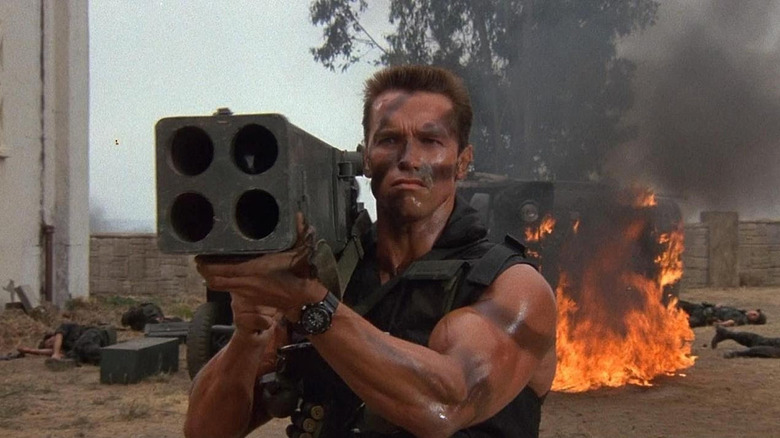
While action movies in general have been and will always be a perennial part of the cinematic landscape, the specific offshoot that occurred during the 1980s was a result of numerous changing trends and factors in popular culture. The action hero had already been through a number of variations over the decades since movies began, ranging from square-jawed, morally upright authority figures to mythical portrayals of historical icons like the gladiator and the cowboy.
During the 1970s, thanks in part to increasing permissiveness in film, action heroes of all types tended to get darker, compromising their ethics in the name of justice and crossing numerous moral lines. These characters putting themselves above the law meant that, by the dawn of the '80s, it became de rigueur for action heroes to eschew all manner of ethical, legal, and moral boundaries. Audiences accepted their actions in a "might makes right" fashion, which — along with the unabashed freedom they enjoyed — made them fun to watch.
Even though superhero cinema would not become the norm until the 21st century, the characters portrayed by the likes of Arnold Schwarzenegger, Sylvester Stallone, Chuck Norris, Mel Gibson and others acted as de facto superheroes, larger-than-life characters who were ostensibly human but could miraculously survive any explosion if the script called for it. Their attitudes followed suit, as they displayed a confidence bordering on arrogance that was topped off with a sardonic wit, usually demonstrated in the form of a pithy one-liner uttered upon killing a baddie or blowing up a truck.
Although the '80s action hero type was changing by the end of the decade — John McClane in "Die Hard" was lauded for being visibly injured and exhausted during the film, for instance — the trend continued through the early '90s.
Army Of Darkness: Bursting The Action Hero's Balloon
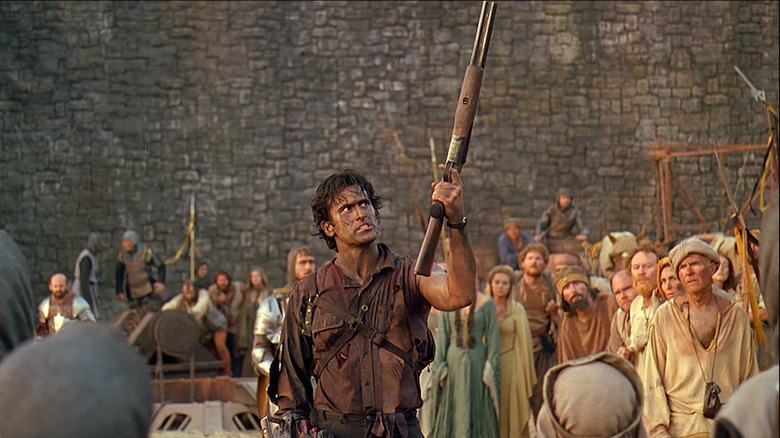
Released in February of 1993, "Army of Darkness" was the unlikely follow-up to director Sam Raimi's "Evil Dead II." The movie steered the trilogy away from ultra-gory horror and toward throwback genre thrills á la Ray Harryhausen creature features and the swashbuckling adventures found in Medieval and pirate movie varieties.
Although "Army of Darkness" is much more of an adventure/horror hybrid than an action movie, the protagonist, Ashley J. Williams (Bruce Campbell), is a deliberate riff on the '80s action hero archetype. The character's action heritage began toward the end of "Evil Dead II," as the victimized and cowardly Ash transformed into a shotgun-toting, chainsaw-wielding prophesied savior by the film's end, quippy one-liners and all. "Army of Darkness" continues the character from this point, having him sarcastically put down just about everyone he encounters as he saunters about, showing off his weaponry and rippling musculature.
However, it's apparent that Raimi and Campbell are parodying the archetype as well as indulging in it. Ash is revealed to be a blowhard who screws up a little more than he helps, unleashing the army of the dead and eventually returning to his own time while unintentionally bringing the Evil with him. Instead of an idealized macho man like John Rambo or John Matrix, Ash's action-hero attitude is portrayed as a disreputable façade, an attitude he must earn as opposed to take for granted. As Ash battles and defeats an evil clone of himself (who demonstrates just as much if not more undue arrogance), he learns that doing the right thing (eventually) is more important than boasting about it.
Last Action Hero: The Action Hero Wants To Grow Up
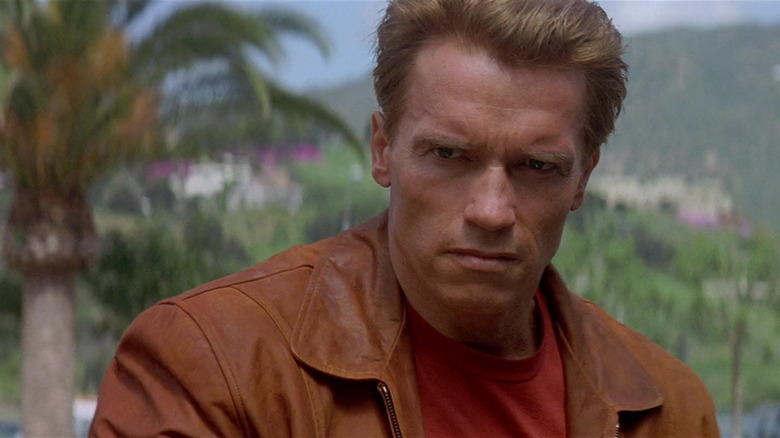
"Last Action Hero," as the title suggests, began as a direct parody of action films, with writers Zak Penn and Adam Leff riffing on Shane Black's distinctive hard-boiled style. However, Black (along with David Arnott) was eventually hired to re-write the script, turning the film into a more earnest summer blockbuster version of what was once parody. Director John McTiernan, who helped establish the '80s hero archetype with "Predator" and "Die Hard," saw an opportunity to send himself up while making another hoped-for smash with star Arnold Schwarzenegger. With the making of "Last Action Hero," one gets the distinct sense that contradiction (if not hypocrisy) was the order of the day — this is, after all, a movie featuring jokes about excessive and superfluous explosions that was promoted on a real-life rocket to space.
Even though "Last Action Hero" indulges in the very elements it seeks to satirize, it cleverly points out how the larger-than-life, constantly quipping '80s hero is beginning to stretch credulity. During the film, the fictional Jack Slater (Schwarzenegger) is befriended by a fan in the real world, Danny (Austin O'Brien), and is more hurt than flattered that Danny can predict his every move and reaction. Even though the film advocates for such characters providing escapist hope to a bleak reality, Slater's trip to the real world — including an encounter with a fictionalized, egotistical version of Schwarzenegger himself — causes him to want to be a more well-rounded man.
As such, when Slater eventually returns to the world on the other side of the movie screen, he's the one demanding that things be more realistic: "I don't want to shoot people anymore and blow up buildings," he demands, a sentiment that's as significant for the action hero as it is for the actor playing him.
The '80s Action Hero Is Dead, Long Live The Action Hero
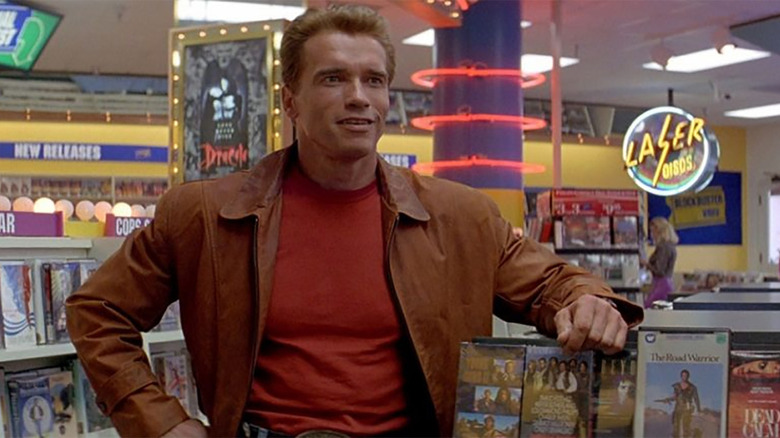
Naturally, neither "Army of Darkness" nor "Last Action Hero" marked the exact end for the '80s action hero type, as new stars such as Jean-Claude Van Damme and Steven Seagal and veterans like Schwarzenegger and Stallone continued to make excessive action films well into the '90s. Yet things looked different in the action movie world during and after 1993: Stallone also sent up his screen persona with "Demolition Man," and former he-men like Kurt Russell started making more grounded fare like "Breakdown." Action films themselves became more concerned with the concept (as in "Speed" or "The Matrix") than as just potential vehicles for action stars.
As such, "Army of Darkness" and "Last Action Hero" act as a last hurrah, satirizing the '80s action hero at its peak before things were to inevitably shift and move forward. While both movies critique the archetype, they do so lovingly, allowing them to double as great examples of the trend while putting it to rest.
Read this next: 17 '80s Action Movies You Definitely Need To See
The post Army of Darkness and Last Action Hero Put the '80s Action Hero to Rest appeared first on /Film.
Surf the Net like it's 1993
with Qt5-based Kristall, the "Small-Internet Browser":
"Kristall is a browser without support for css/js/wasm or graphical websites. It can display user-styled documents in several formats, including gemini, html, markdown, … provided by a server via gemini, gopher, http, finger, …"
By default, Gemini is the only enabled protocol; to access the web head to kristall → Preferences... → Generic → and check HTTP and HTTPS.
The result is a calm, pleasant browsing experience reminiscent of "a more... civilized age":

Clint Eastwood Had One Demand Before Playing Dirty Harry
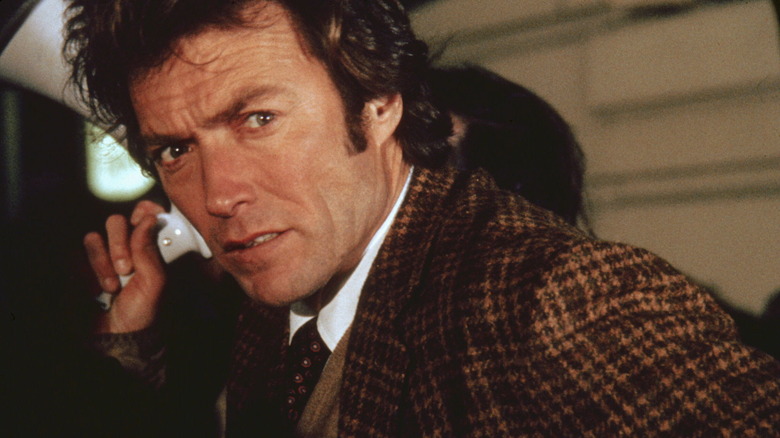
Marc Eliot's 2009 biography "American Rebel: The Life of Clint Eastwood" lays out the production of Don Siegel's 1971 cop drama "Dirty Harry" as a complicated affair. The first version of the film's script was violent and raw, telling the story of a cop who has to break the law in order to stop a dangerous serial killer. As the script was passed around, though, many became wary of its violence, and many actors expressed interest and dropped out. The rights to the film were once in the hands of ABC who aimed to adapt it for TV, but sold it to Warner Bros. when they realized just how violent the film had to be. Irvin Kershner was once hired to direct, with Frank Sinatra starring. Sydney Pollock, George C. Scott, Robert Mitchum, Steve McQueen, and many other famous people brushed up against "Dirty Harry" during pre-production. Even Terrence Malick purportedly wrote a draft.
Eastwood was finally approached in 1969, while he was wrapping production on "Play Misty for Me," and he agreed to play the part. Thanks to several years of playing Hot Potato with the script, however, Eastwood was handed several drafts in a pile. The final film was, as one might see, a lot more in tune with the first draft listed above. It was about a cop, Harry Callahan, who was stymied by recently implemented Miranda laws and was unable to apprehend a Zodiac-like killer on a series of technicalities. Harry would eventually be pushed to take matters into his own hands.
According to an interview with Patrick McGilligan, printed in the 1999 book "Clint Eastwood: Interviews" edited by Robert E. Kapsis and Kathie Coblentz, Eastwood was the one responsible for restoring the script to its original simplicity and for hiring Siegel to direct.
He Did A Good Job On 'The Beguiled'
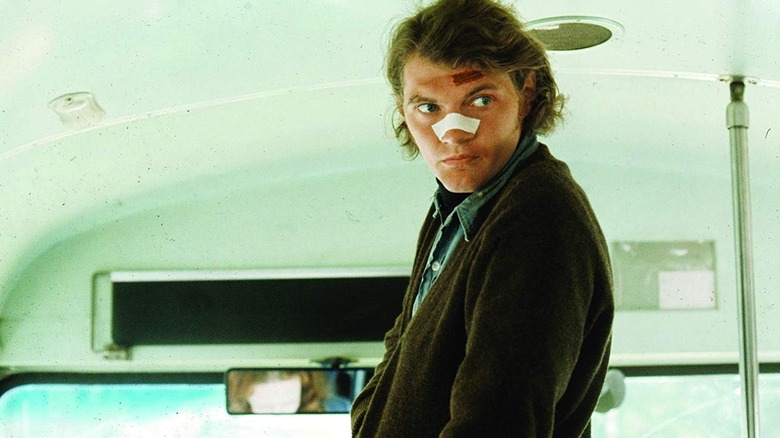
Eastwood has worked with Siegel more than any other director. Prior to "Dirty Harry," the two worked together on the 1968 film "Coogan's Bluff," 1970's "Two Mules for Sister Sara," and the 1971 drama "The Beguiled." In 1979, the two would reunite for "Escape from Alcatraz." McGillian, in his interview with Eastwood, pointed out that "Dirty Harry" was probably the director's best film. Eastwood had a slightly different take but agreed that Siegel was the kind of person he would have liked to see in the director's chair for a gritty cop drama. Eastwood was the one who got the director attached. He said:
"I thought he did a nice job with 'The Beguiled.' Of course, I was the one who hired him for 'Dirty Harry.' When I came over [to Warner Bros.], it was tied into somebody else and the script was going in another direction. I got Siegel involved. My agreement with Warner Bros. was, 'I'll do it if you'll let me hire a director like Don Siegel and we'll take the story back to its original concept' — which was Harry Julian Fink's screenplay. They had taken it off in another direction."
So Eastwood's demand was simple: simplify. Go back to basics, get a pragmatic director, and "Dirty Harry" can move forward. According to a 2008 interview with MTV, Eastwood expanded further, pointing to how wild "Dirty Harry" had become before he stepped in to parse it down. Evidently, there were snipers a-plenty, the military became involved, and the film had become more action-centric.
The Later Drafts
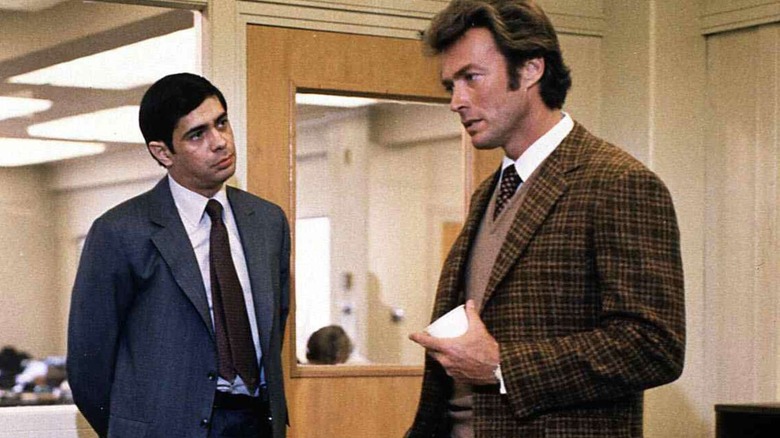
In the MTV interview, Eastwood recalled hearing about the "Dirty Harry" project when Frank Sinatra had been attached. He remembers being offered the part specifically because Sintra had "a problem with his hand" and had trouble holding a gun. Eastwood didn't quite believe it but took the role nonetheless. When asked about what the studio had changed by the time he was handed a script, Eastwood said this:
"Everything. They had marine snipers coming on in the end, and I said, 'No. This is losing the point of the whole story, of the guy chasing the killer down. It's becoming an extravaganza that's losing its character."
There may be a high-octane version of "Dirty Harry" in a parallel universe somewhere, but it is likely very different from the terse political polemic audiences eventually saw in 1971. When asked if he would ever play the part again, Eastwood was somewhat pragmatic. At the time he was a young man of 78, and there was only the scantest possibility of return, given the story was nigh perfect. Eastwood acknowledged that any 78-year-old would certainly no longer be a cop. That's even truer as Eastwood approaches 93. He said:
"There could be a scenario. I suppose if some mythical writer came out of nowhere and it was the greatest thing on the planet, I'd certainly have to think about it, but it's not like I've ever courted it. I feel like that was an era of my life, and I've gone on to other things. I'm not sure about being Dirty Harry again, but who knows?"
Read this next: The 20 Greatest Human Villains In Movie History
The post Clint Eastwood Had One Demand Before Playing Dirty Harry appeared first on /Film.
'Why I'm Resigning as an FTC Commissioner'
Read more of this story at Slashdot.
New Mirai Malware Variant Targets IoT Devices and Linux Servers
A new Mirai botnet variant, known as V3G4, is being used by attackers to target Internet of Things devices and Linux-based servers.




